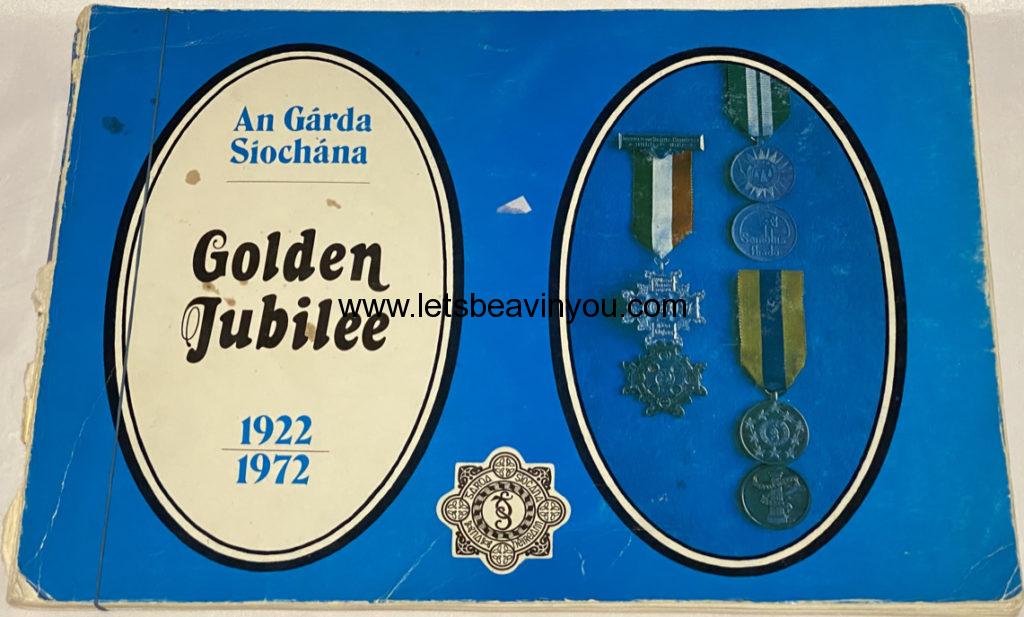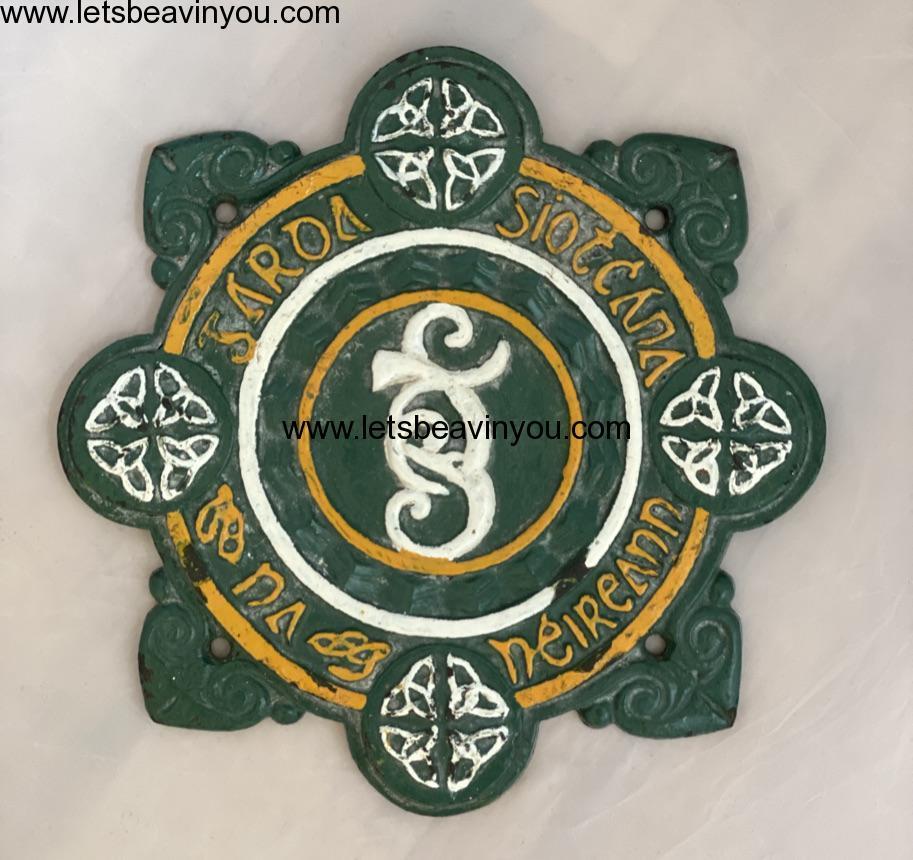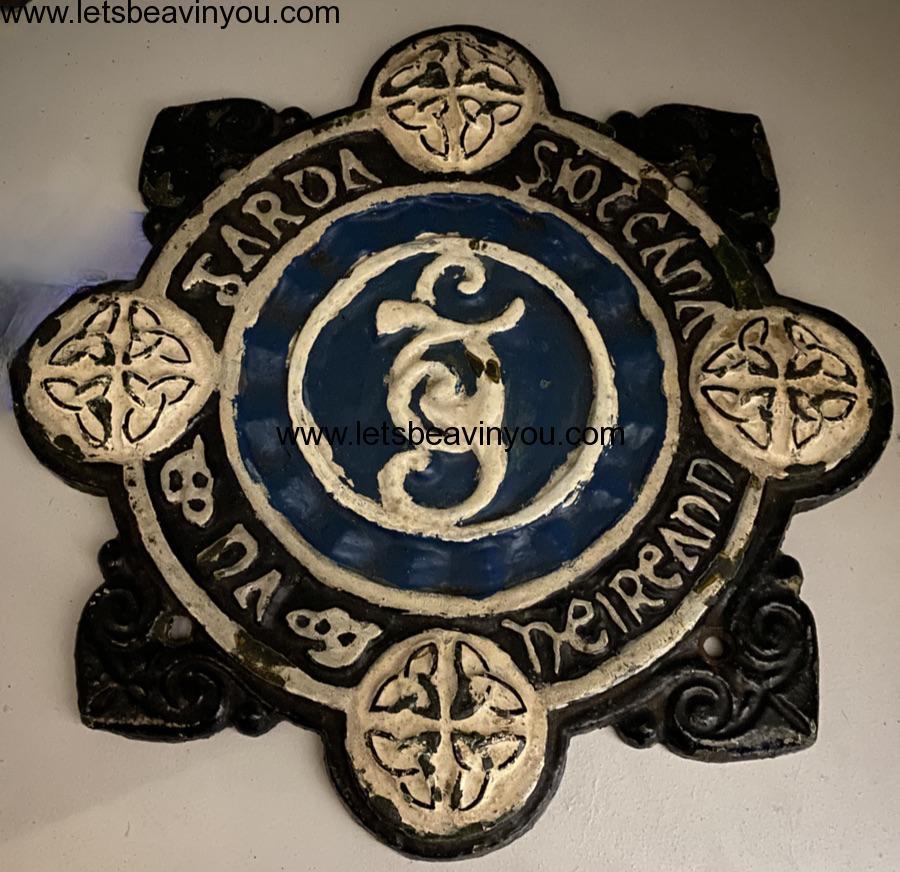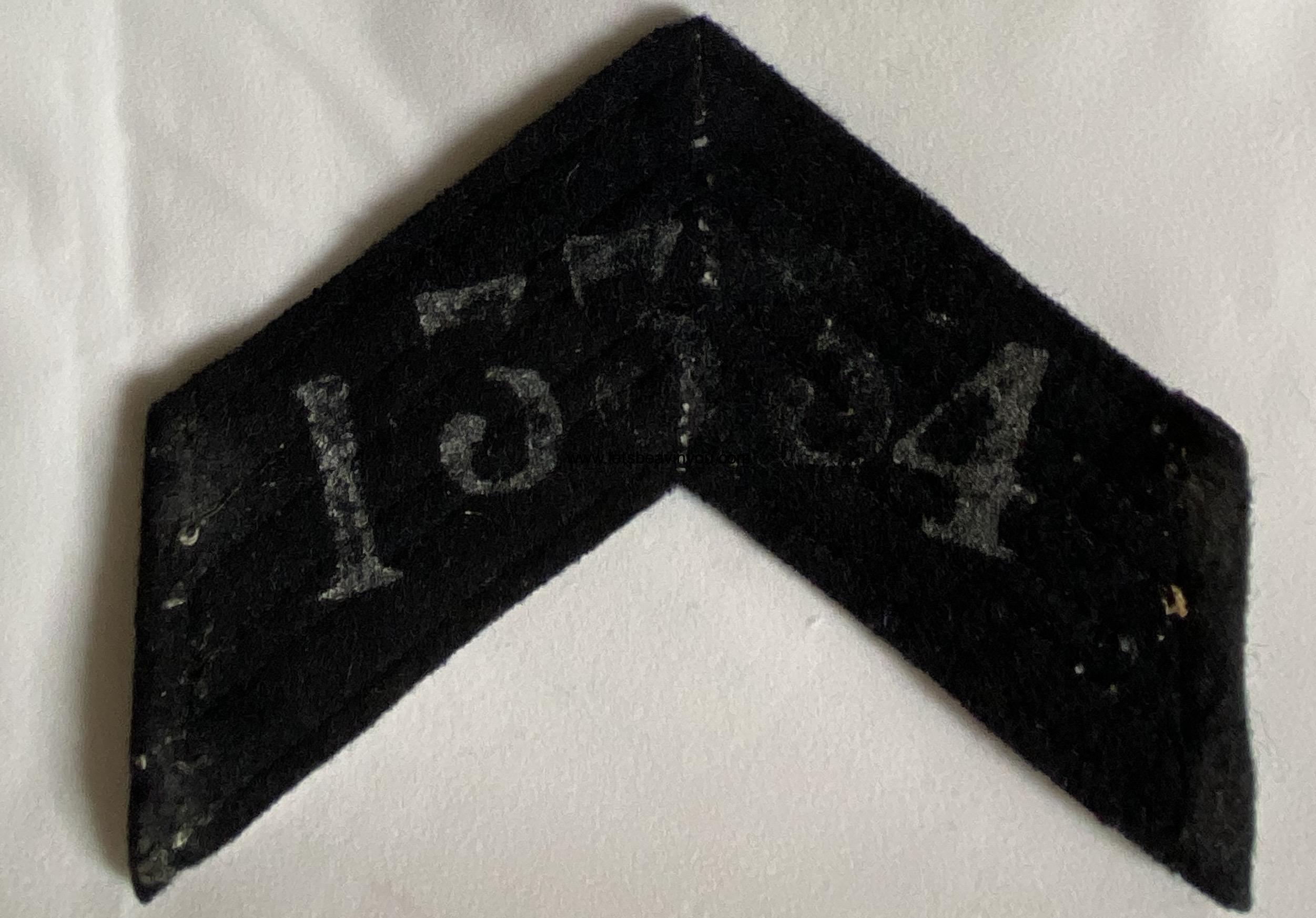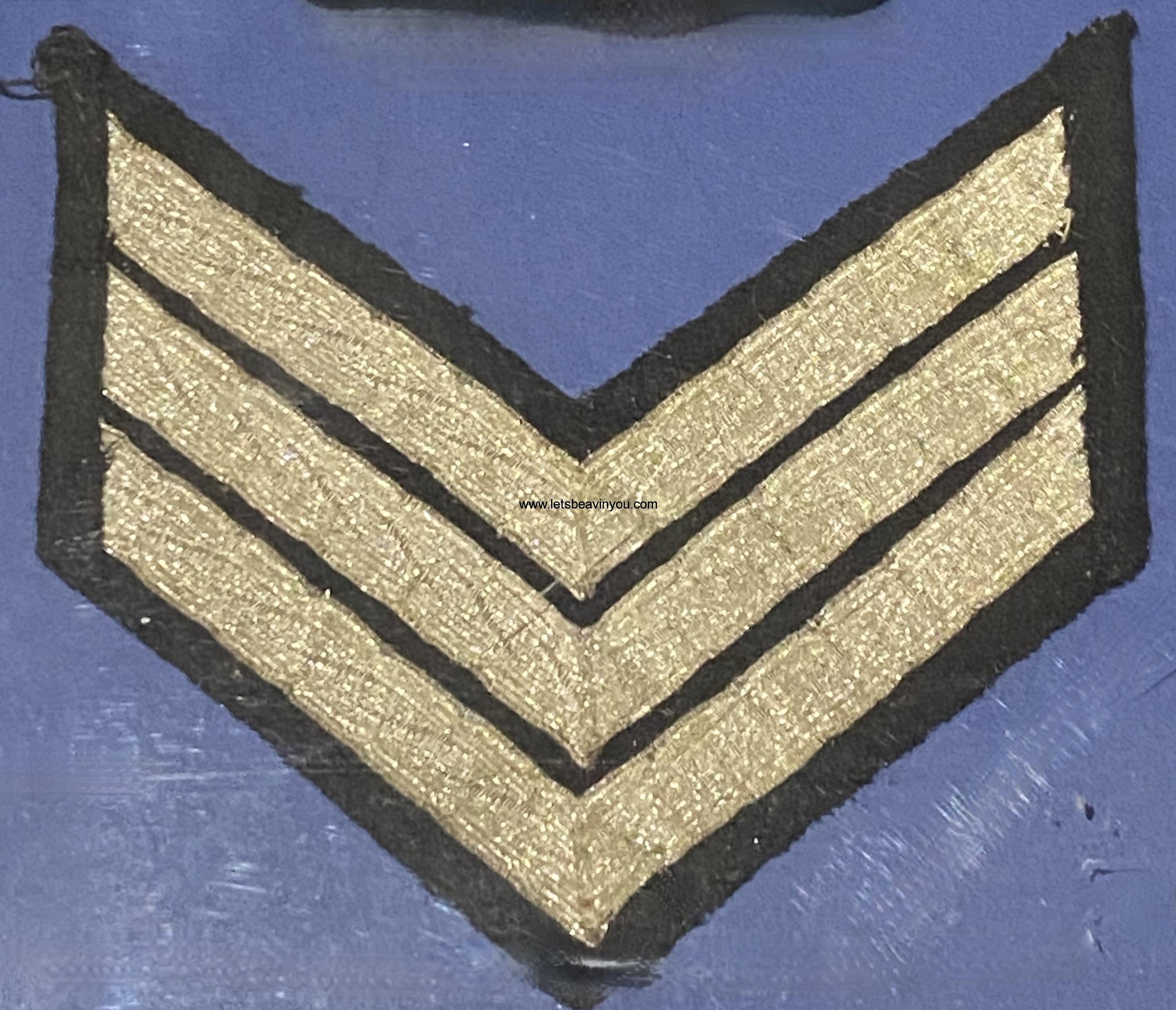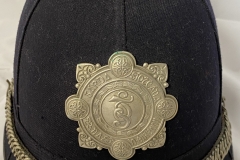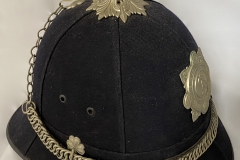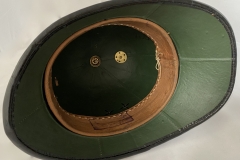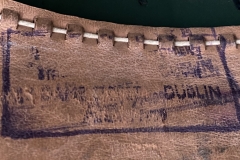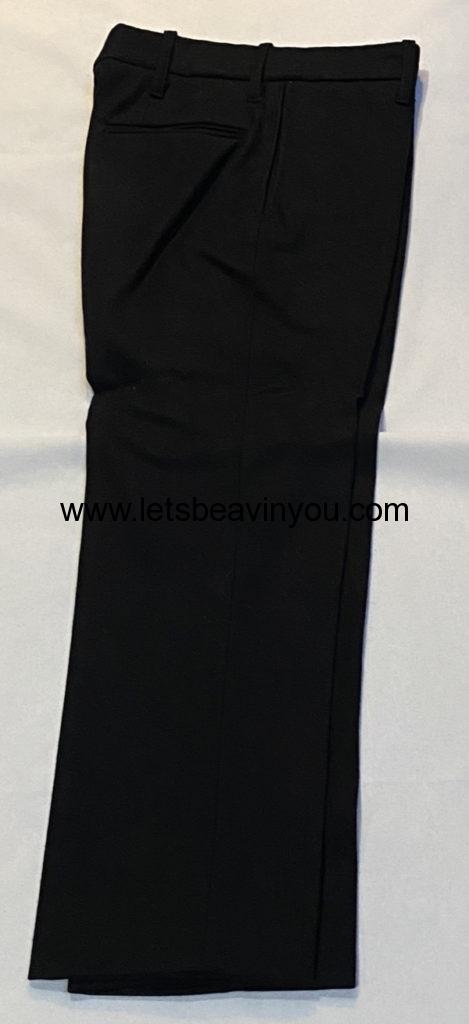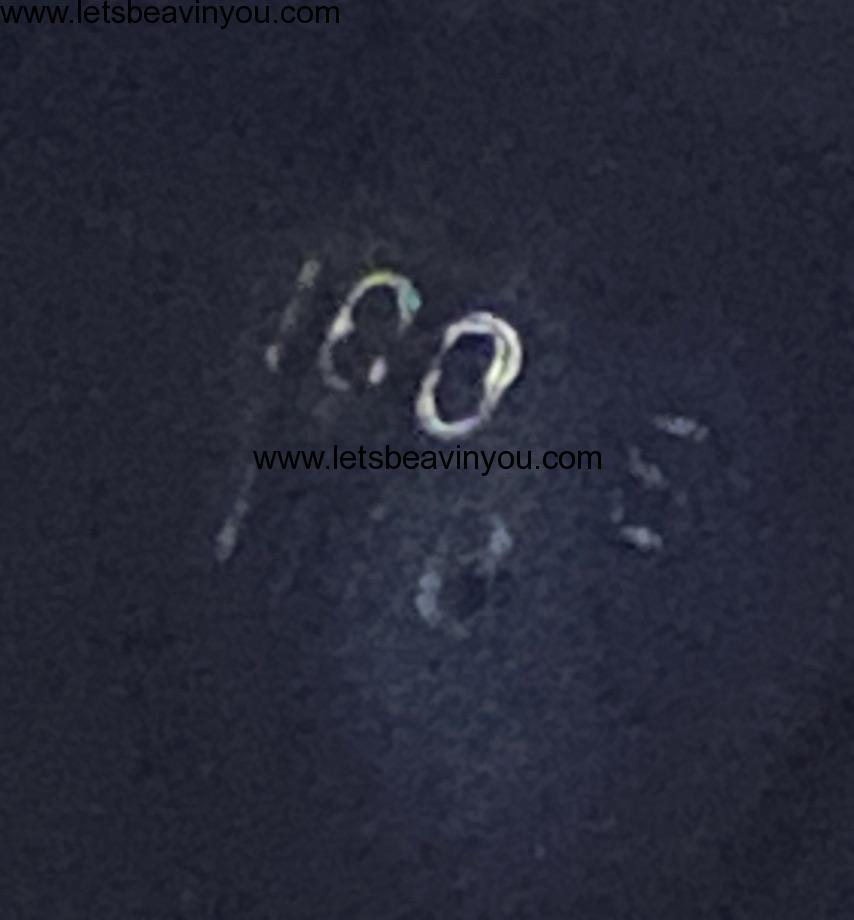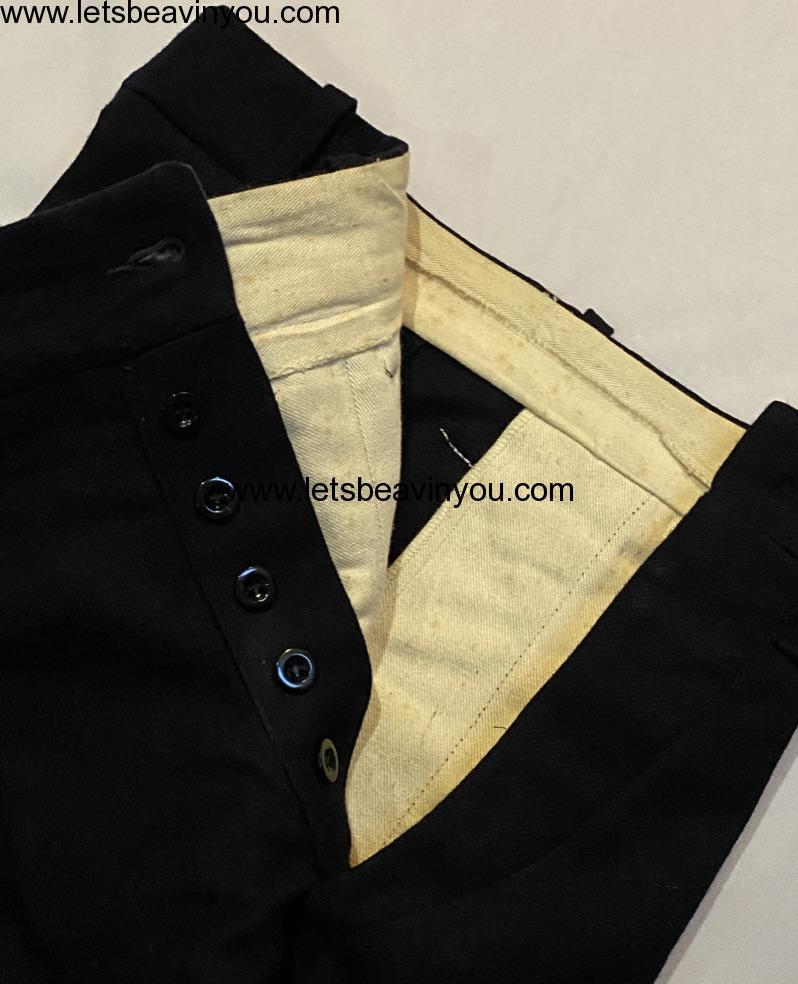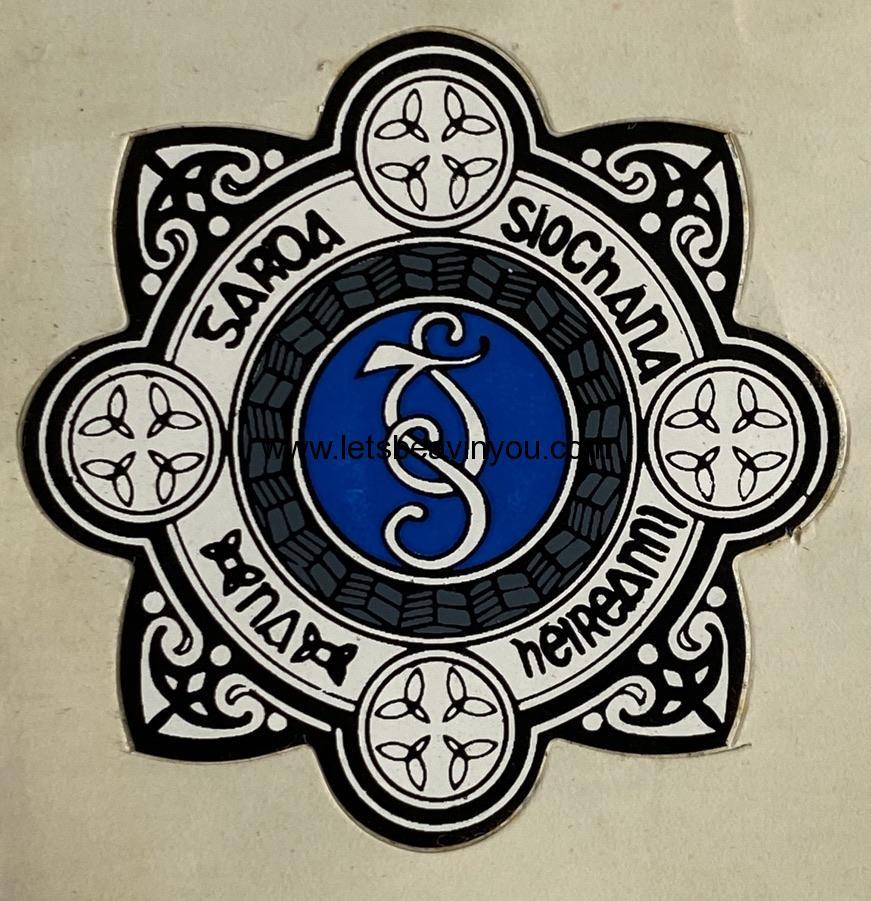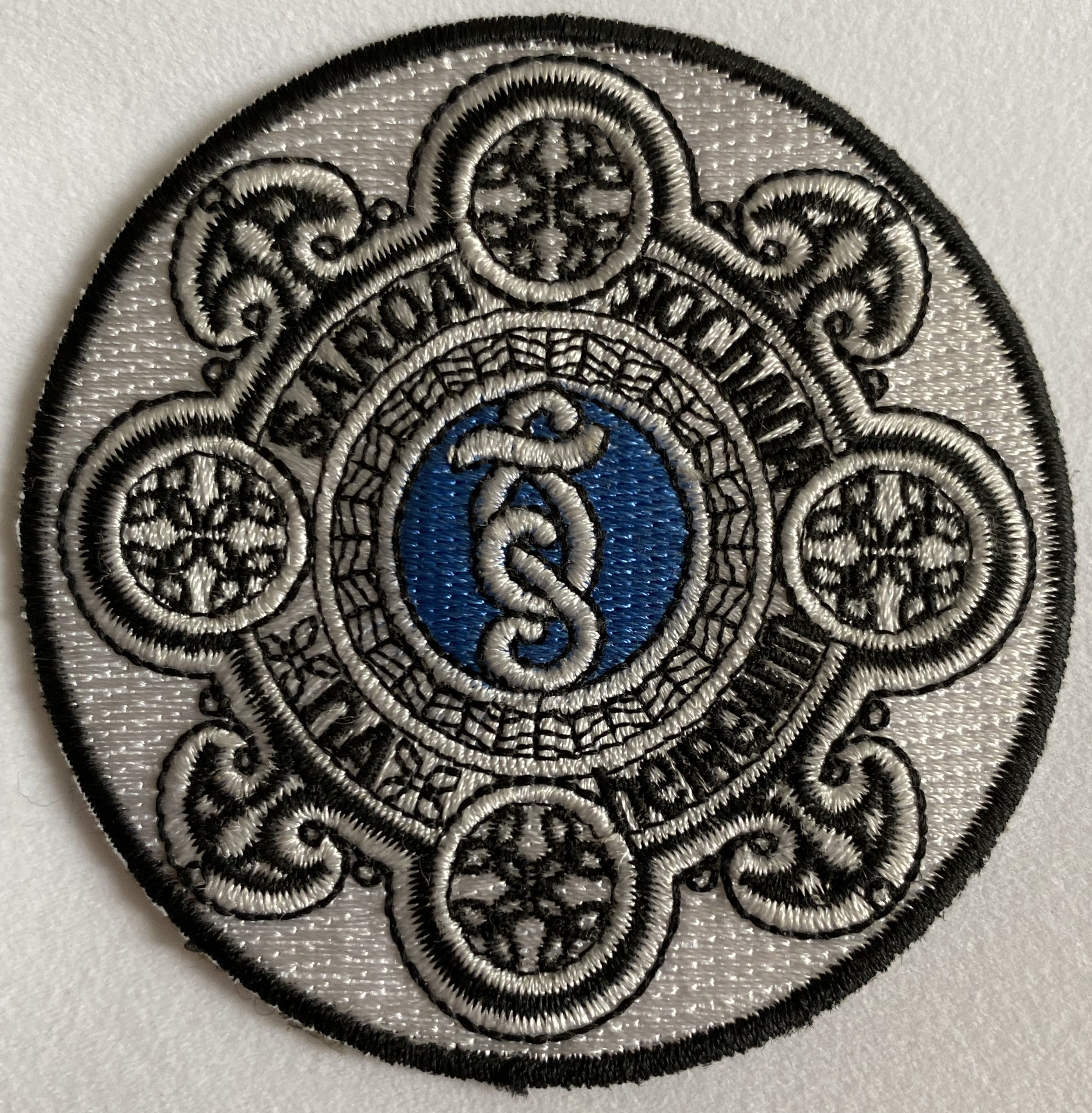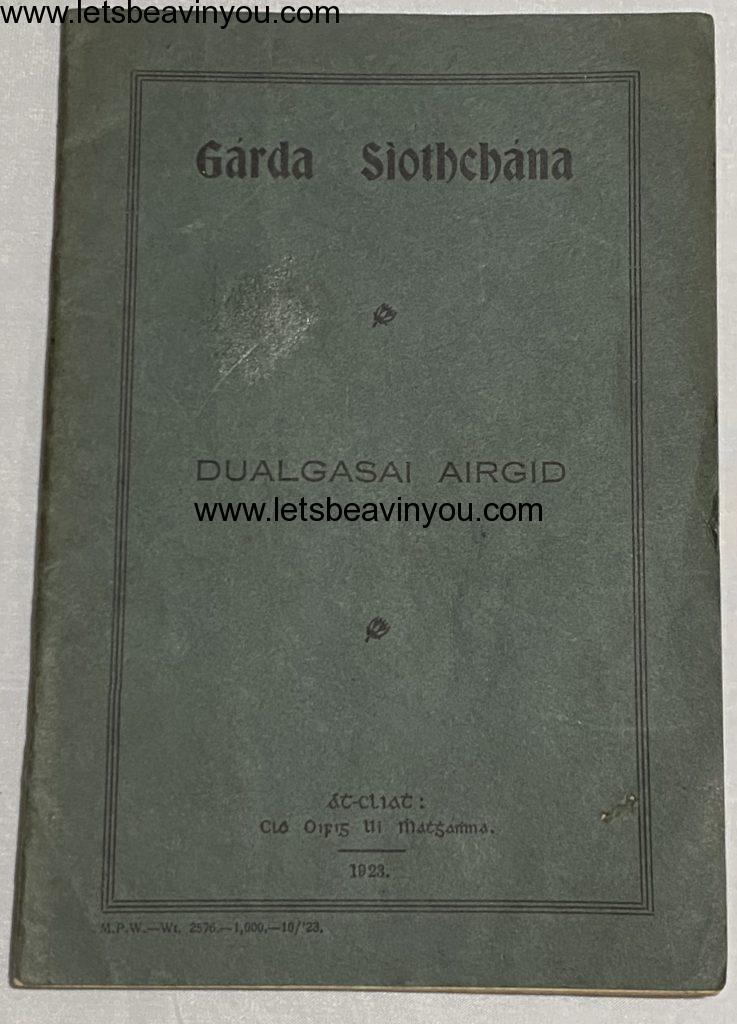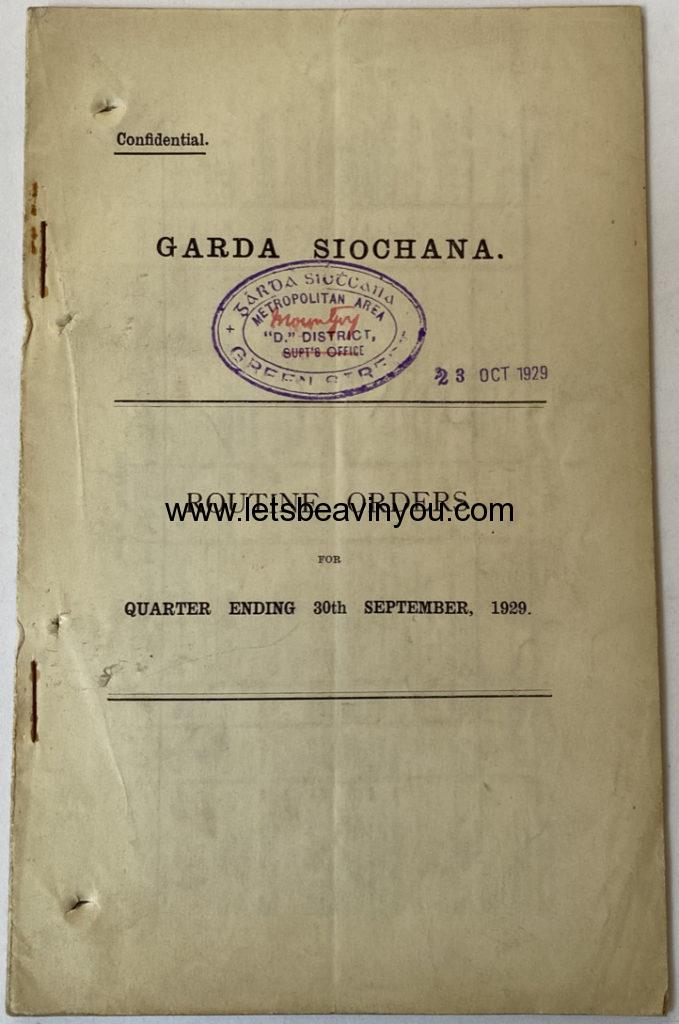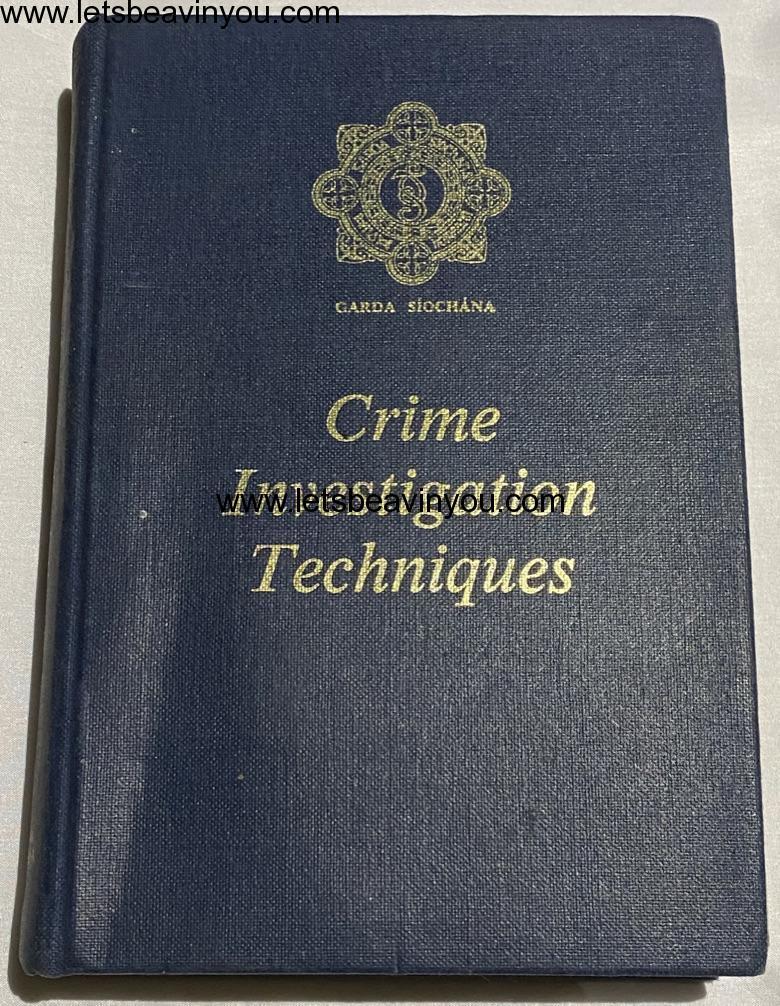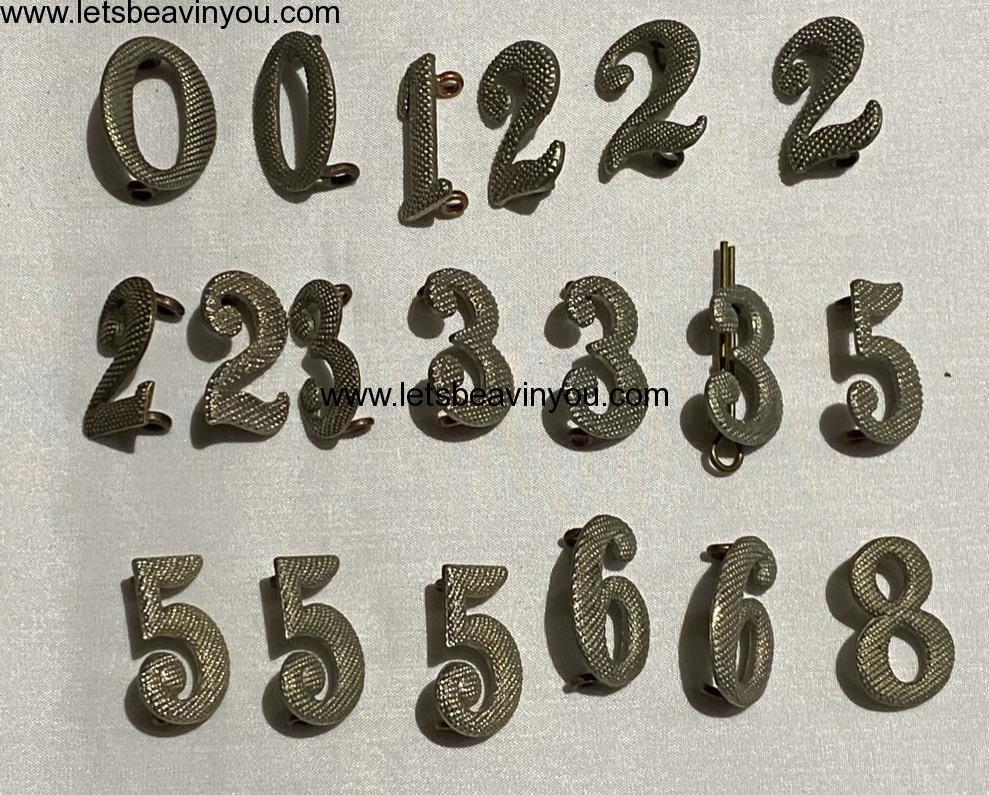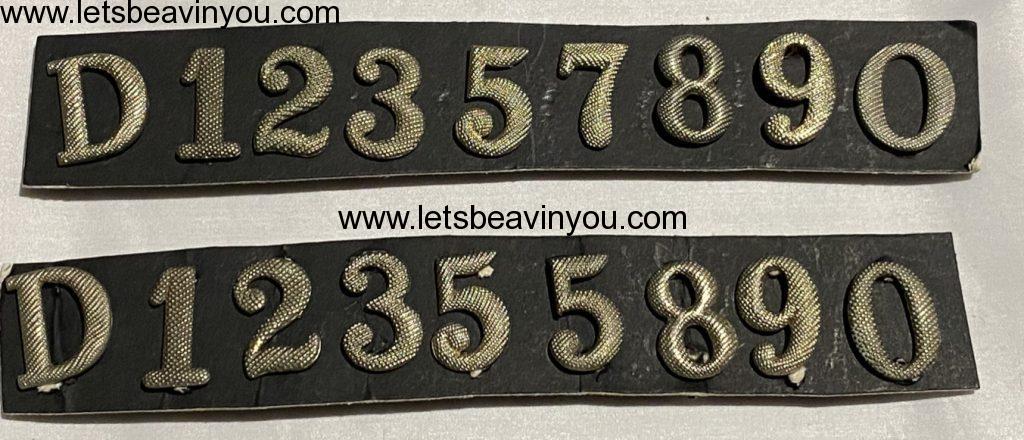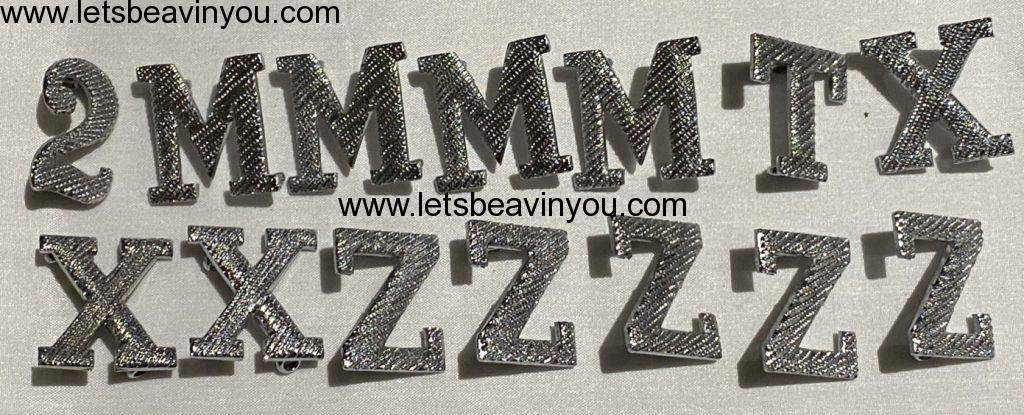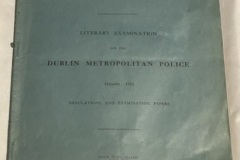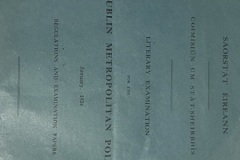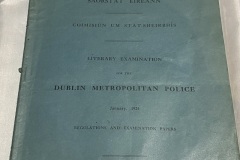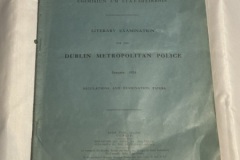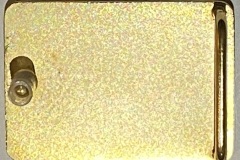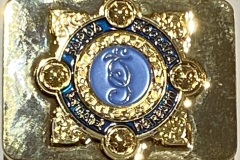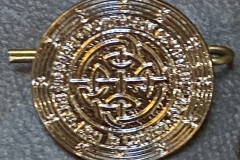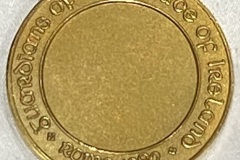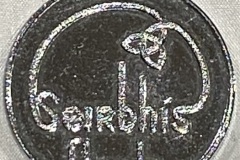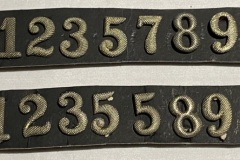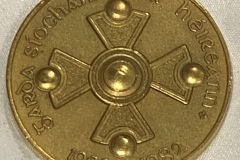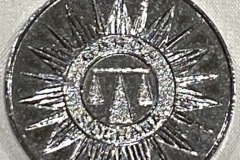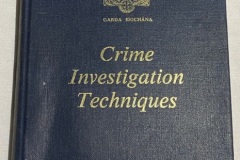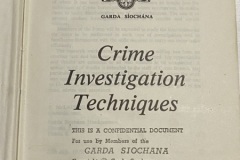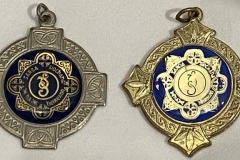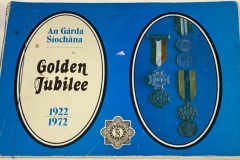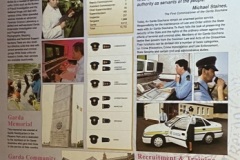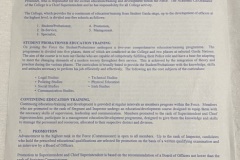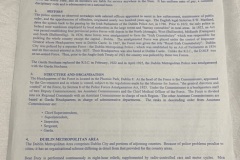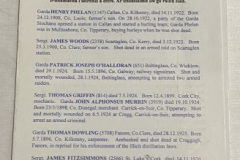With the centenary of the Garda, I thought I’d start the page afresh with the commemoration poster from the 75th Anniversary in 1997 that they shared with the Royal Ulster Constabulary. There were a number of joint celebrations in 1997 and I will endevour (in due course) to post some of the brochures and other ephemera that I kept from the time.
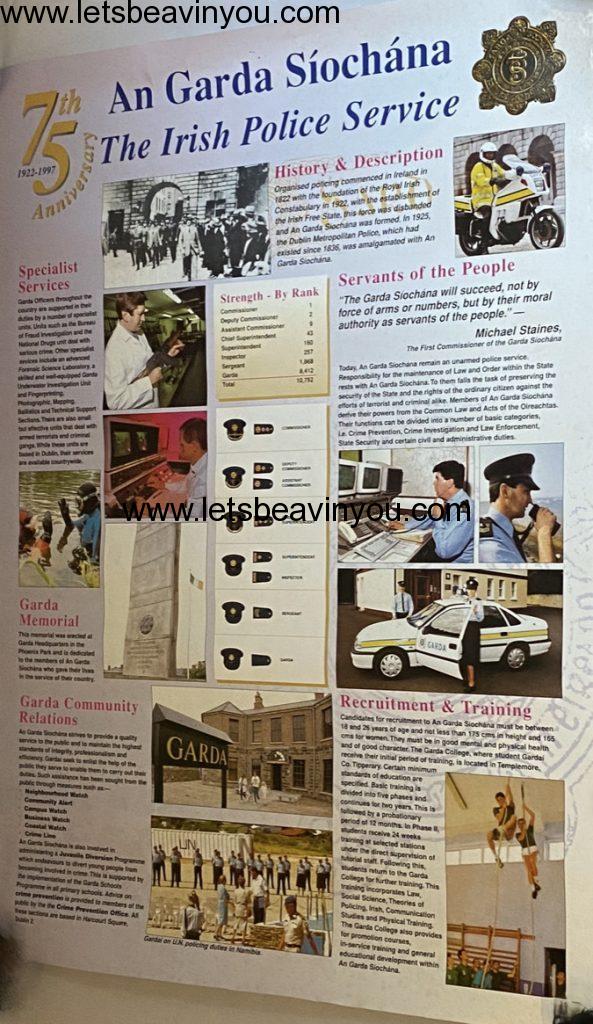
Station Badges
My collection of Garda items is small, but slowly growing and has now grown out of its original case. The Garda Station Badges above sit with the other Irish Police Badges in their own case. Both the examples above are the first variant of the badge with the original spelling Gárda Síoṫċána na h-Éireann. While I had thought that the first was the orginal paint scheme, I’m informed that the green should be lighter, with the centre disk in yellow and the central motif in green. Where the four corners are painted with white, this too should be yellow. One further interesting comment was that some Garda Station plaques were painted in county colours in later years and this might account for the different paintwork. The second example, however, is the correct second paint scheme of black, navy and white. This was then standardised in the 1970s to white, blue and black. The newer station plaques have the modern spelling Síochána.
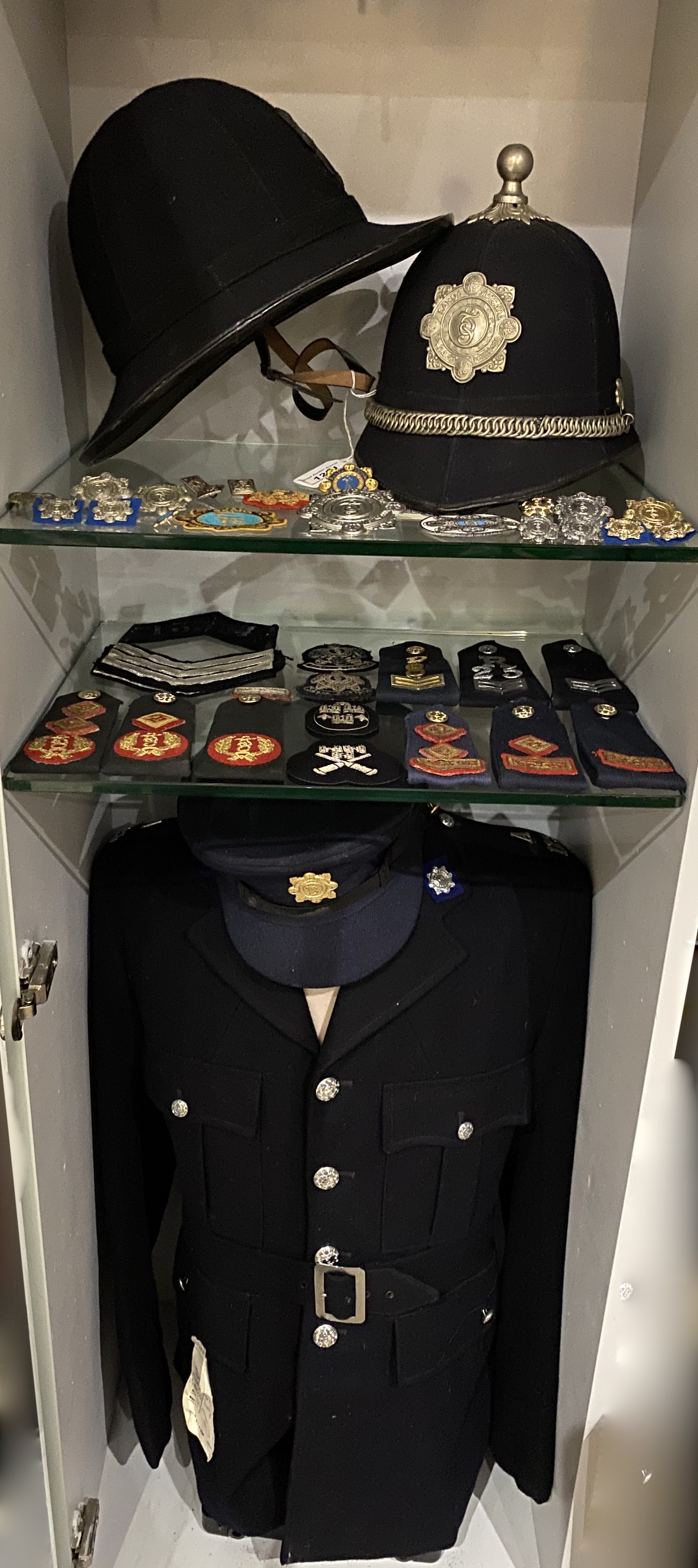
Ranks of An Garda Síochána
Garda ranks generally mirror those in corresponding UK forces, but with no CI and the replacement of the common law office of constable with the statutory rank of Garda. In time I will search out the reference, but there was a legal case in Ireland where it was determined that the office of constable had not survived the establishment of the Irish Free State and that consequently the Garda did not have the discretion in their appointment that applied to UK constables. More of that another day.
Given that Dublin historically had its own service, the Dublin Metropolitan Police, Guards in Dublin were for a time known as Dublin Metropolitan Garda and Guards stationed in Dublin had slightly different epaulettes and cuff insignia.
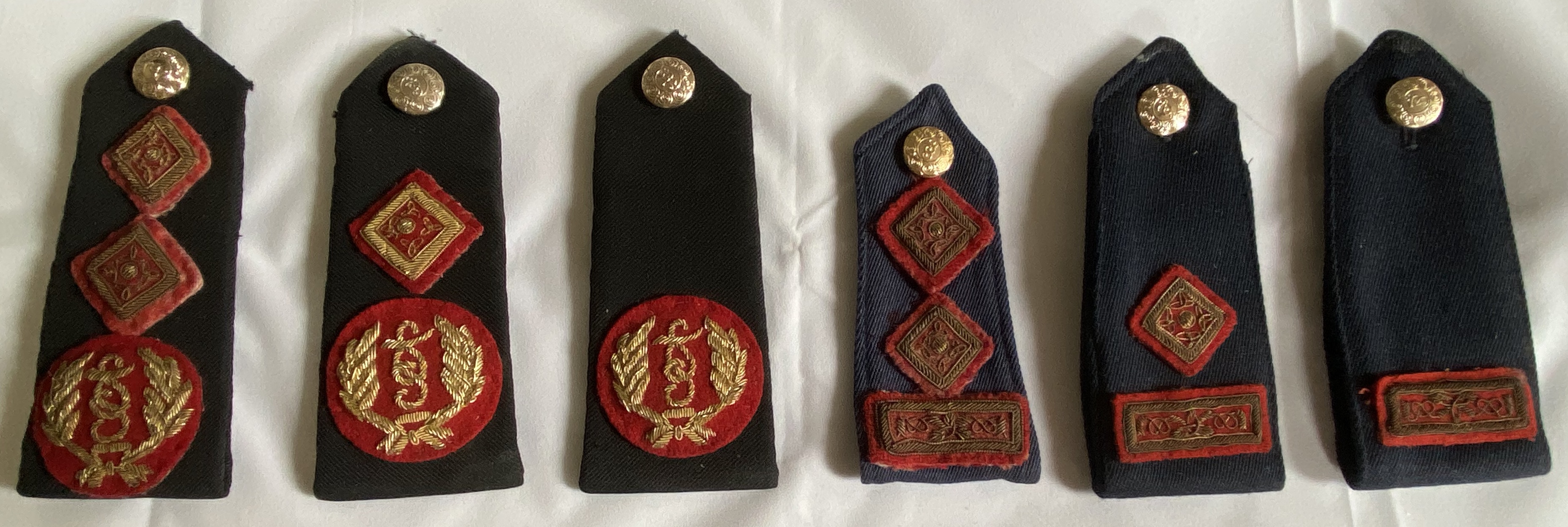
Garda Ranks: Commissioner to Inspector
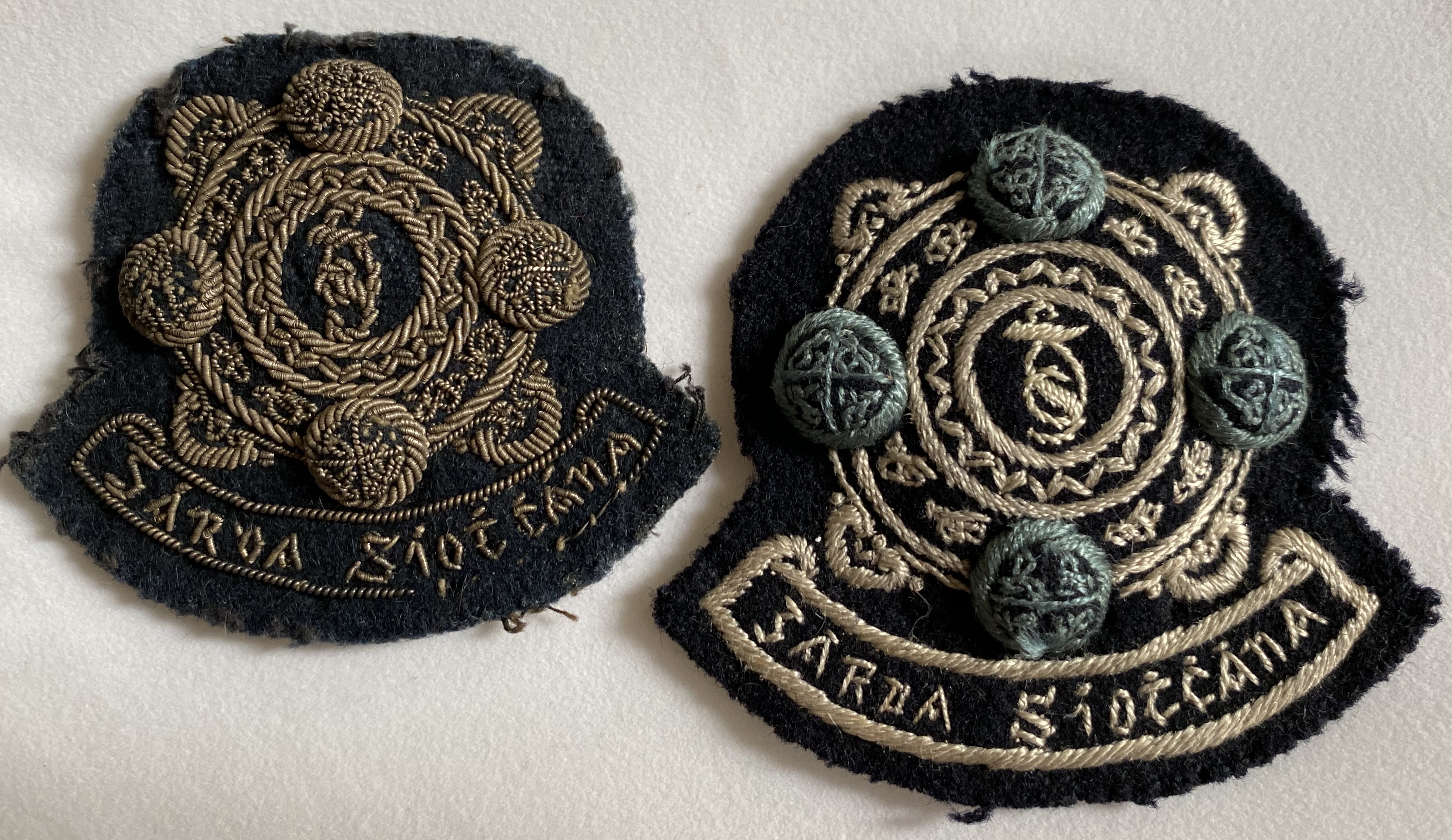
1st pattern bullion Inspectors cuff badge (1922-40s) & second pattern thread example (1940s – 1960s)
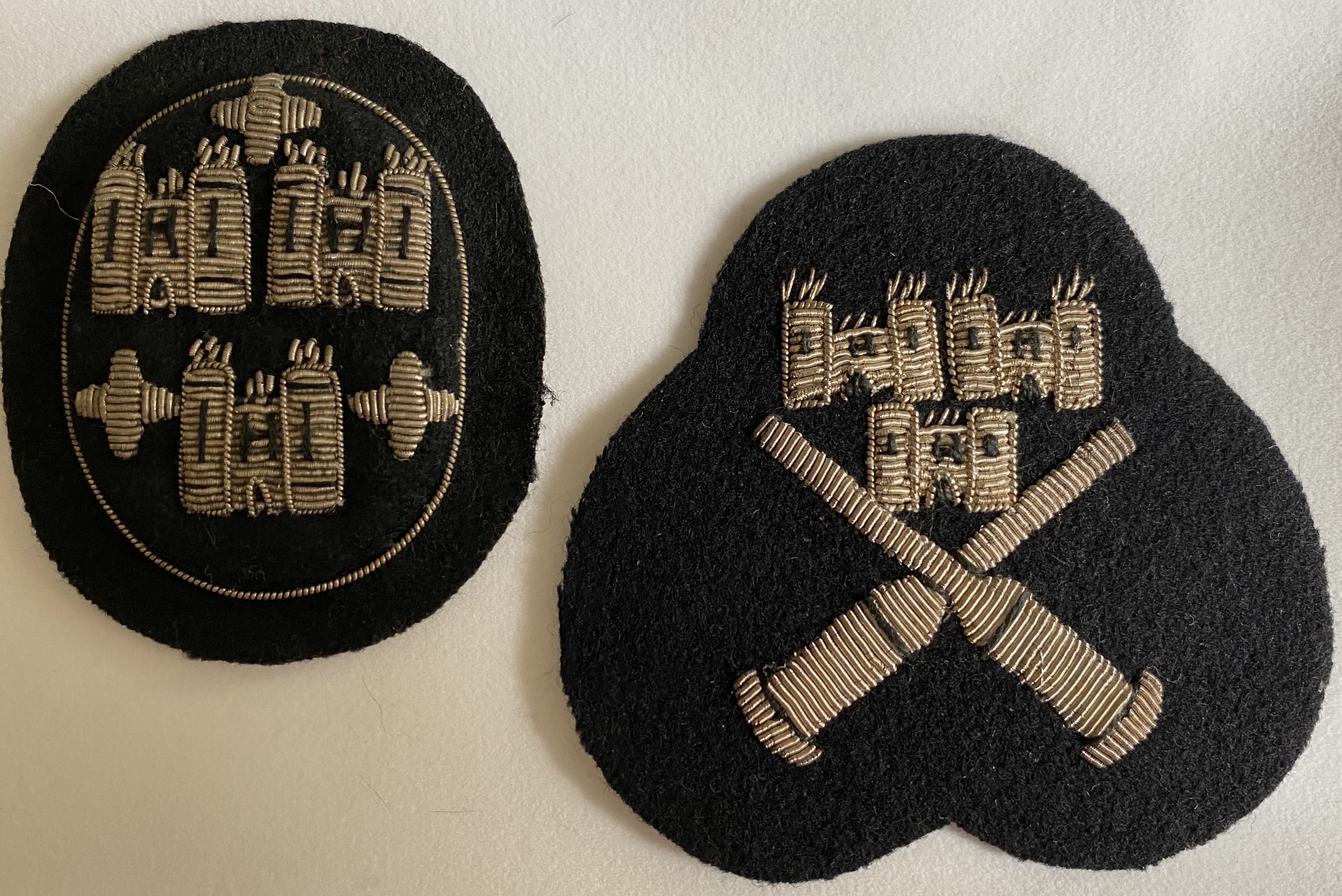
Left: Station Sergeant (Dublin). Right Staff Sergeant
Garda Sergeants stripes, now worn in the usual way and not inverted as per RIC / RUC. Stripes below only to show officers number printed to rear. Interestingly, photographs from the 1920s show Garda Sergeants wearing their stripes on the cuff in the same way as the RIC, but this must have changed by the 1930s.
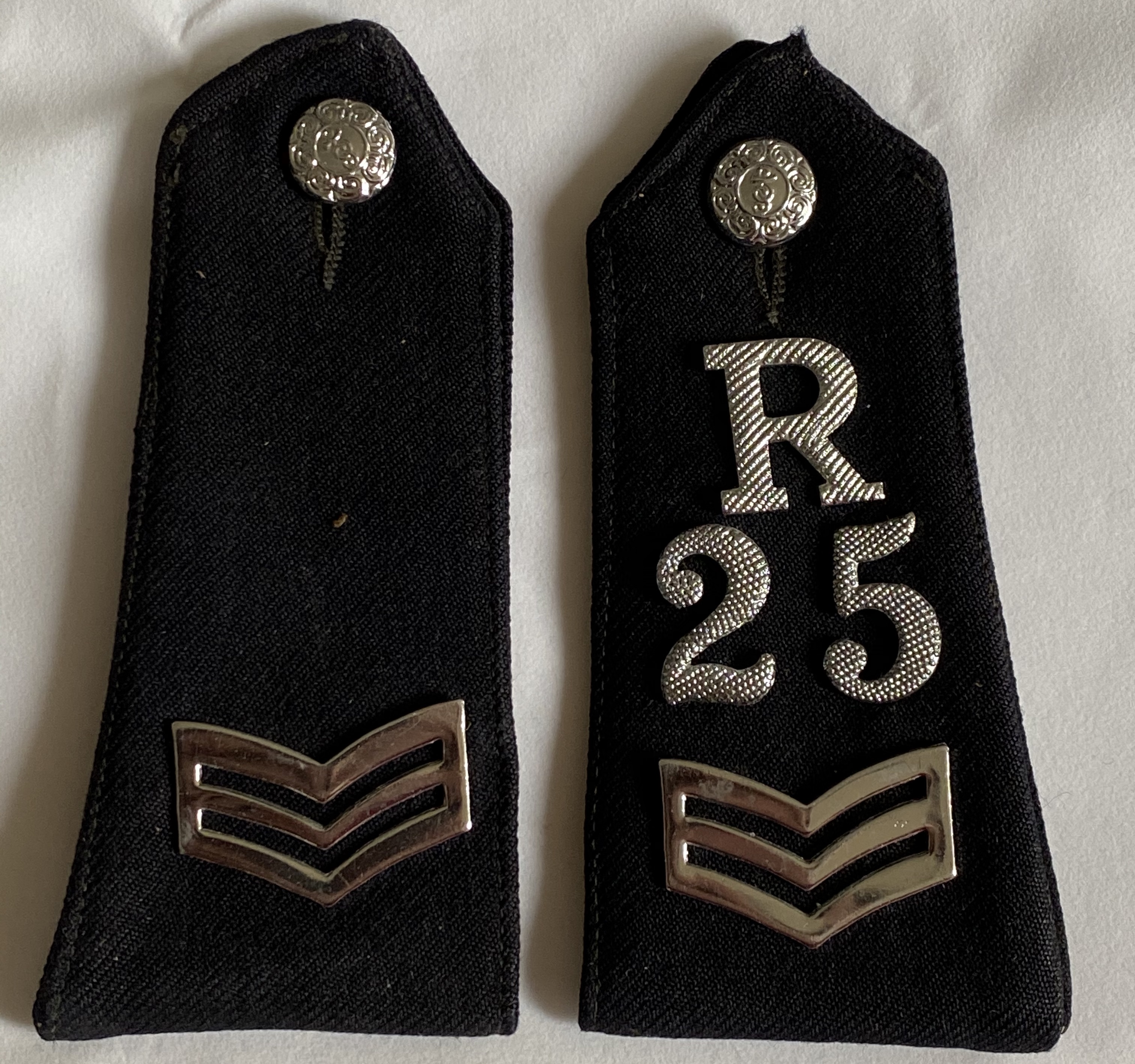
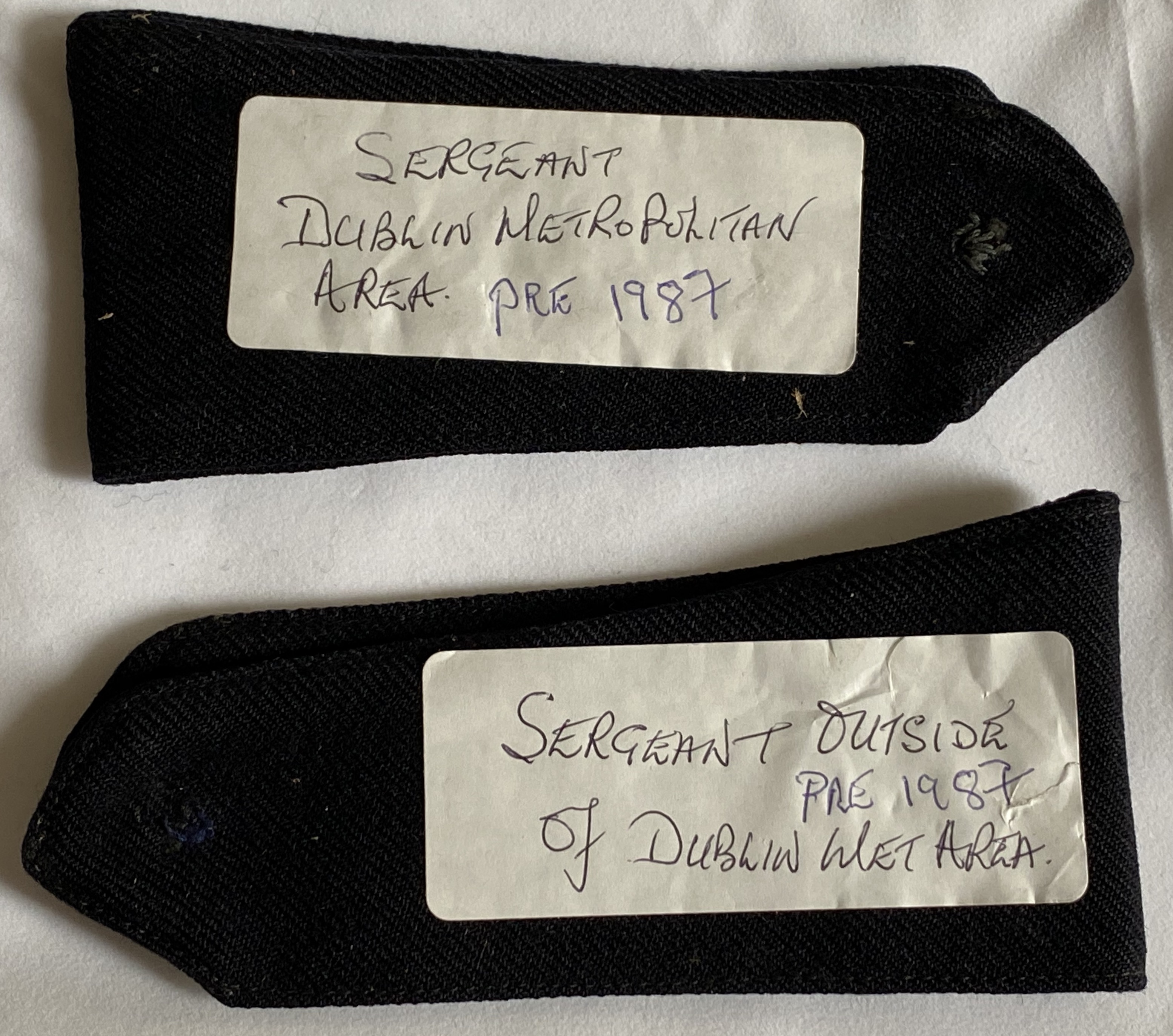
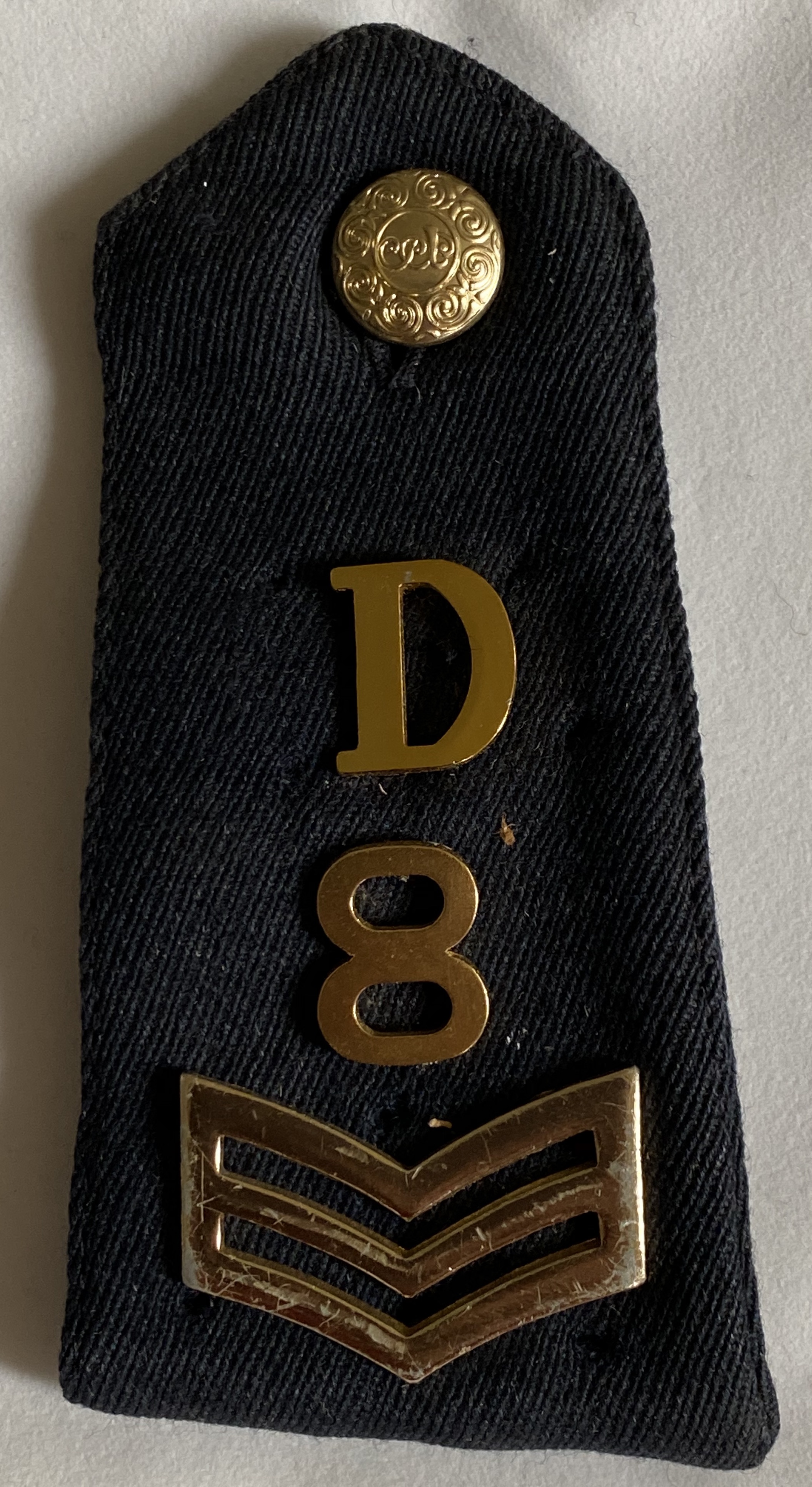
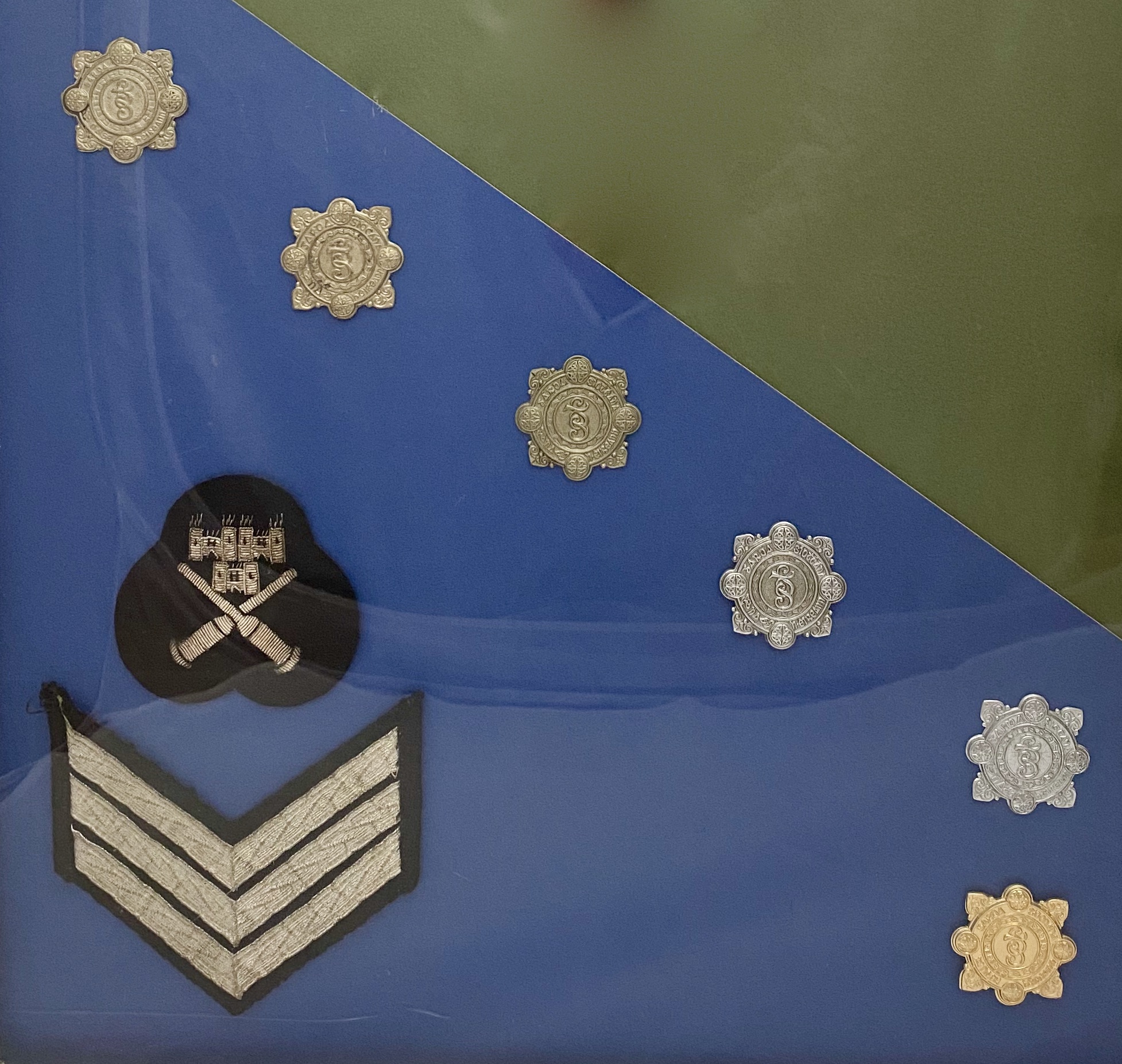
Garda Cap Badges 1922 (top left) to modern (bottom right)

Garda Whistle – manufactured by J Hudon & Co 244 Barr St, Birmingham (1909 – 1930).
Garda Helmets and Caps
The Garda were issued at least three different styles of helmet from creation in 1922. The first is generally accepted to be a four panel ball top. then a six panel rose top, together with a ‘Keystone Cops’ type night helmet with no cover to the top vent. I am lucky enough to have one of the latter. I also have a six panel helmet, with original badge, but it has the furniture of the first variant ball-top. I have read that Dublin theatre companies took some of the discarded 1930s / 1940s variants and remodelled them as ball tops for theatrical purposes. On the other hand, Whytes, a noted Dublin auction house sold a similar example in March 2016 as ‘Late 1920s Garda Siochana Helmet’ – https://www.whytes.ie/art/late-1920s-garda-siochana-helmet/150752/?SearchString=&LotNumSearch=&GuidePrice=&OrderBy=LN&ArtistID=&ArrangeBy=list&NumPerPage=30&offset=417. Perhaps those more expert than me could give a view?
Nothing wrong with the example below, however. A splendid example of a night helmet:
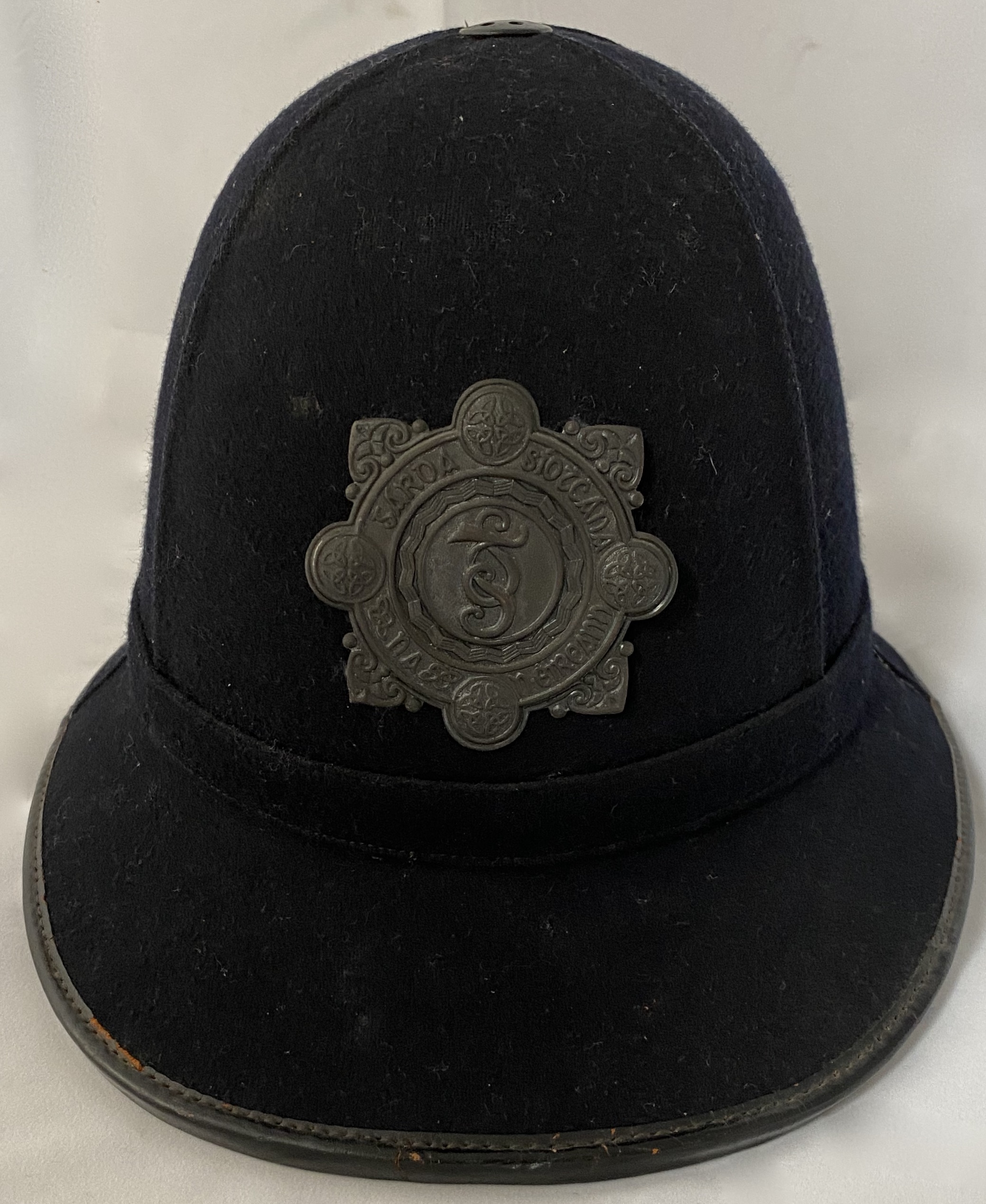
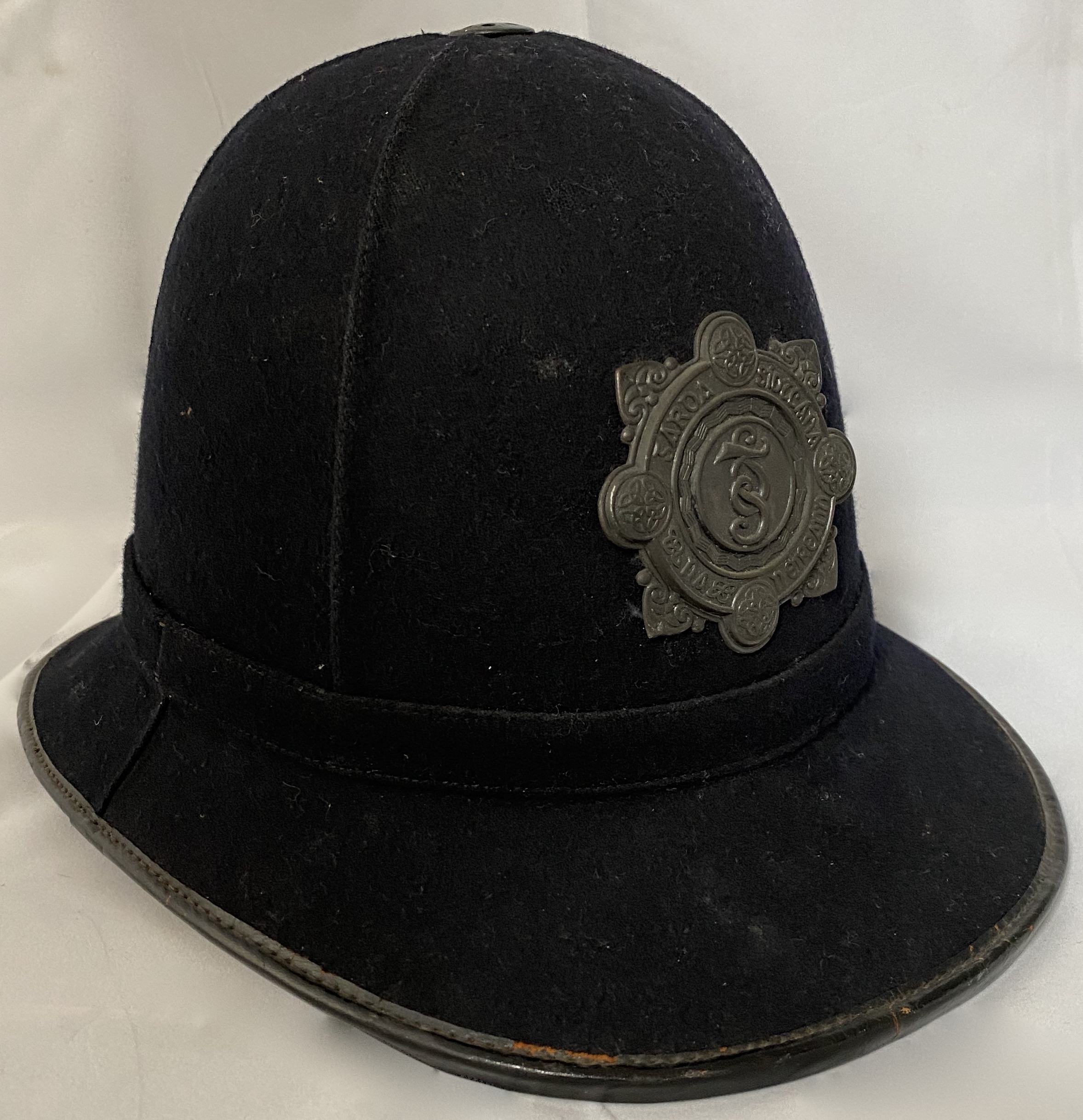
This, and most other helmets were sourced from England, from firms like Gaunts or Hobsons. The example above is from Hobson & Sons of London. Finally in this section, a modern females cap:
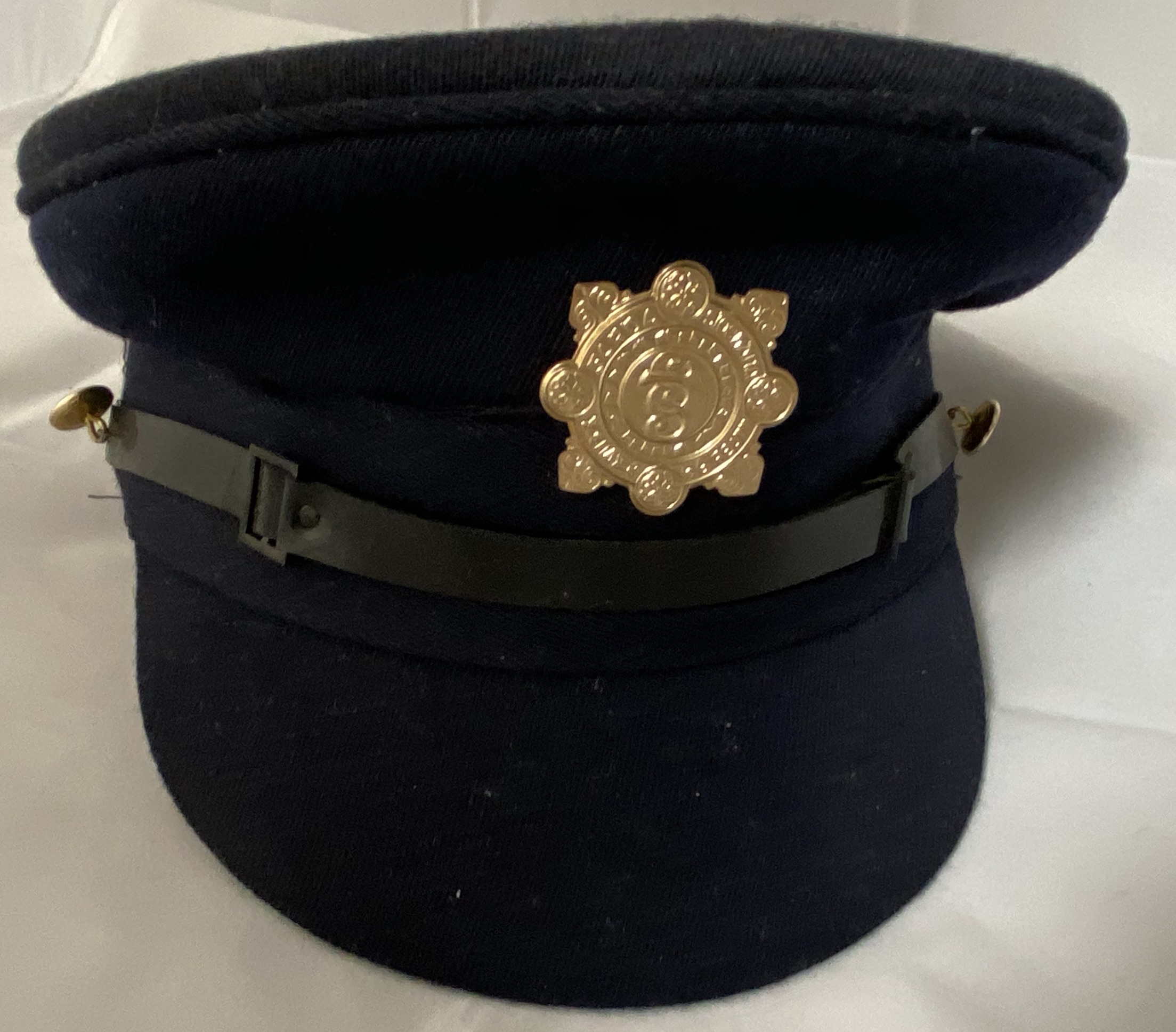
Cap Badges
Senior officers cap badge: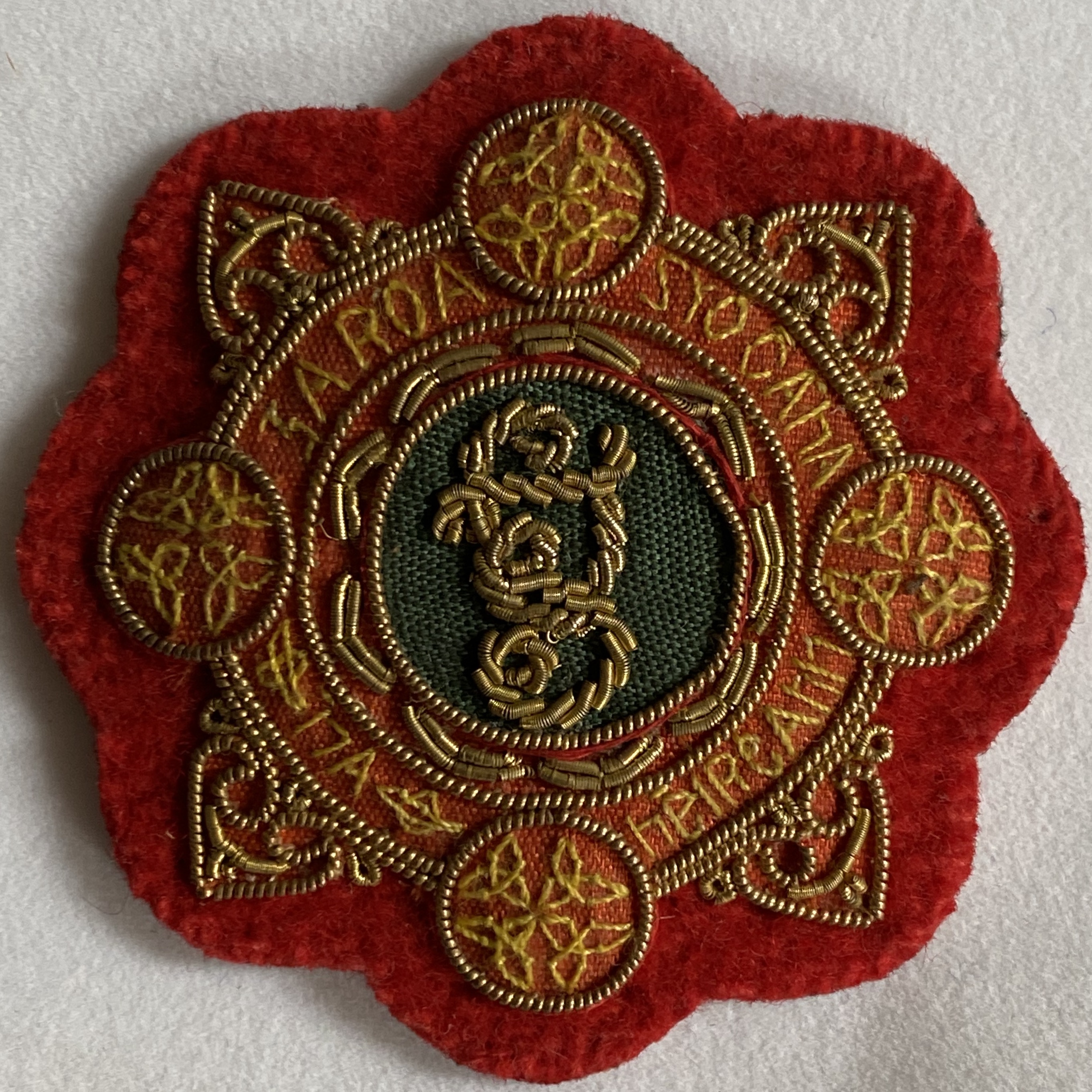
1922 Cap badge: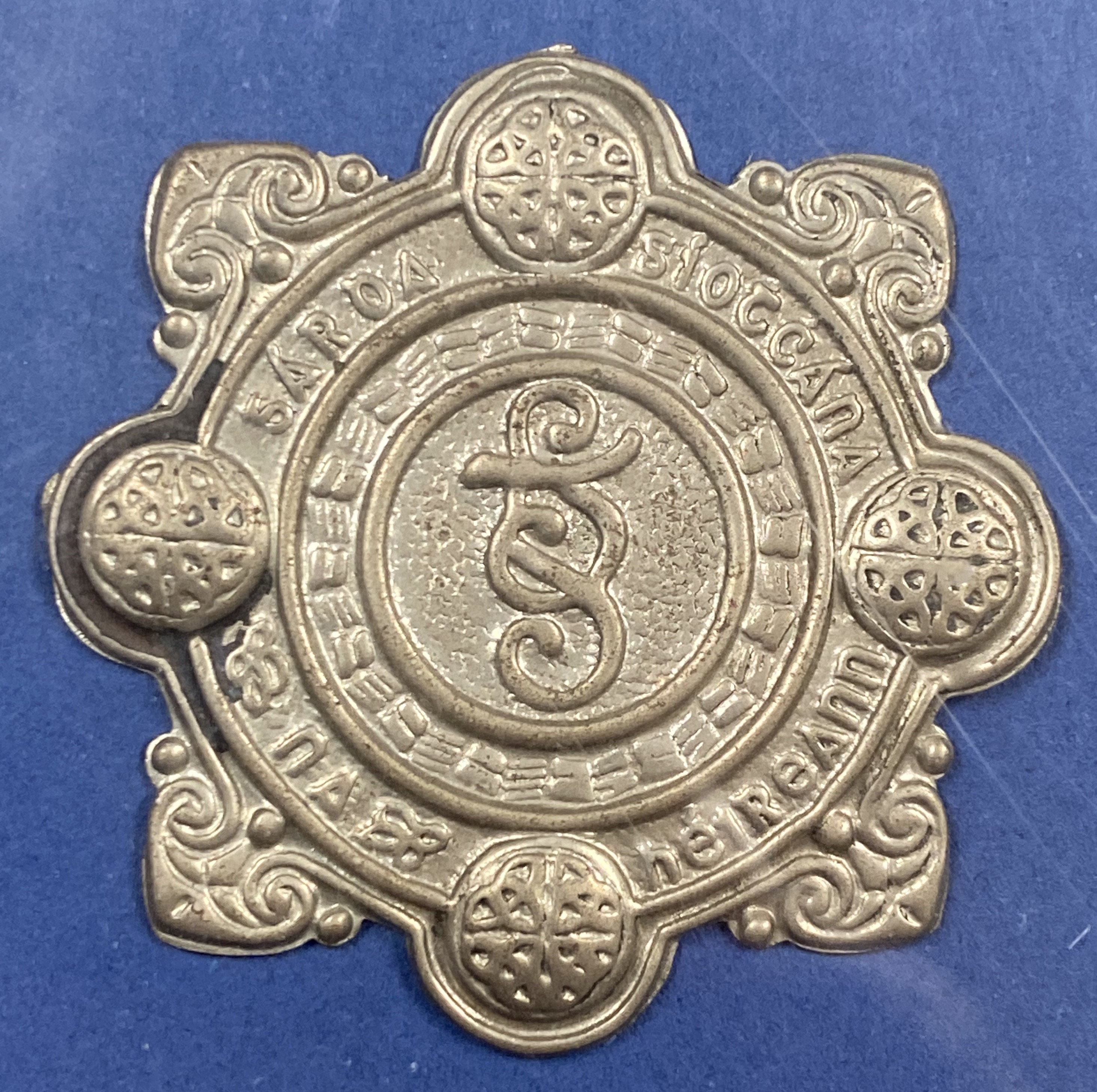
1930s Cap badge: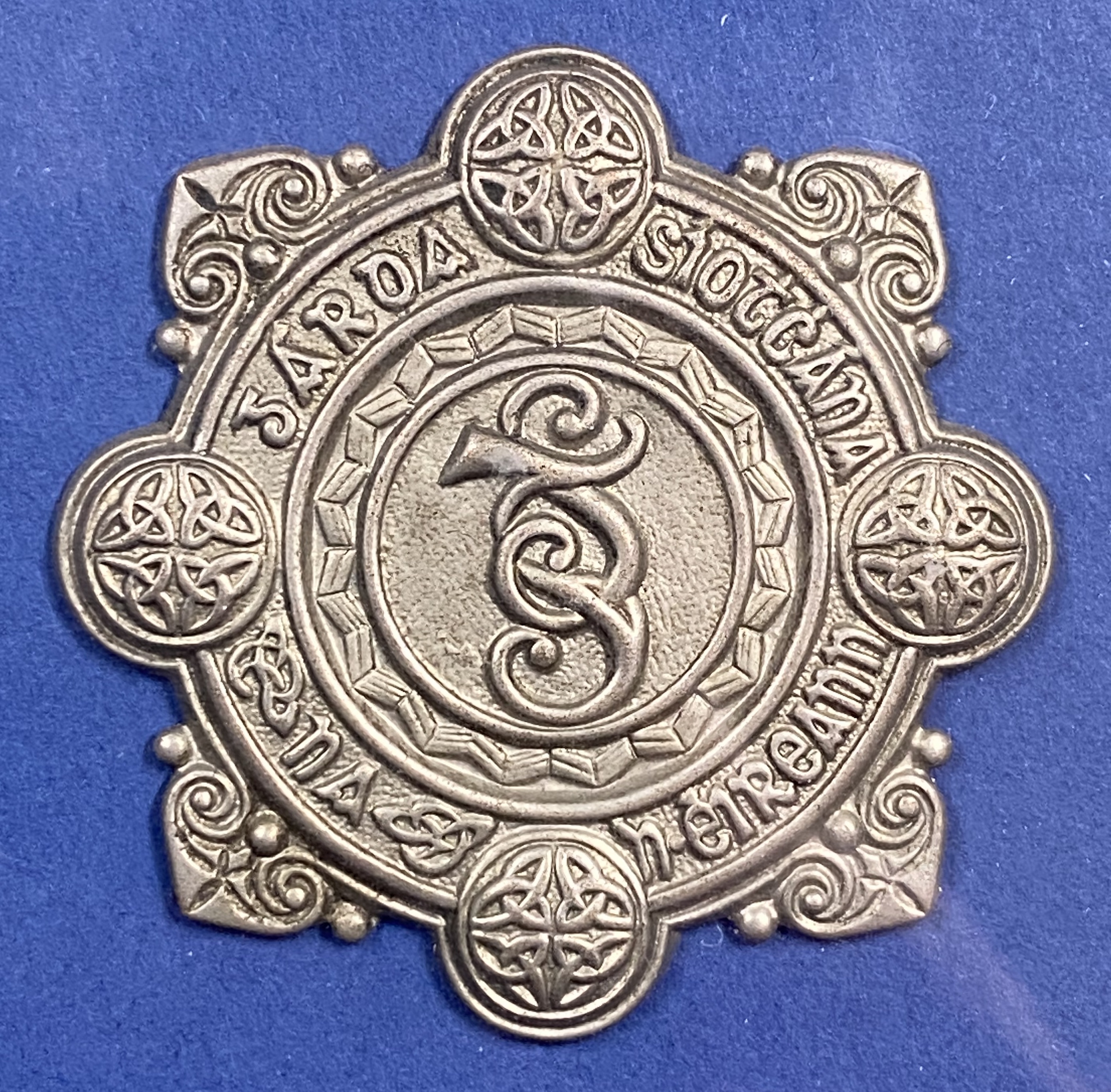
1930s Cap badge: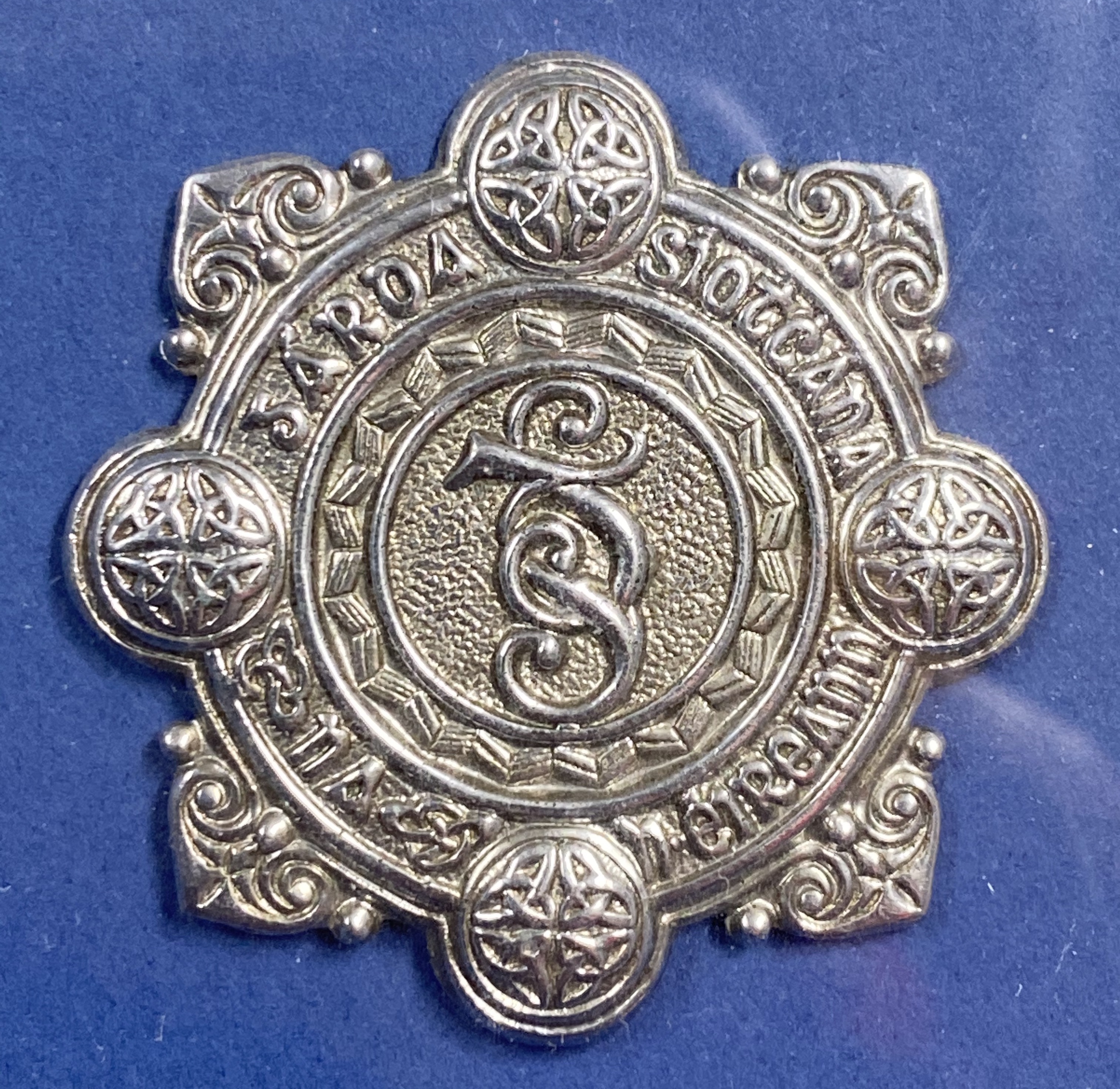
1940s Cap badge: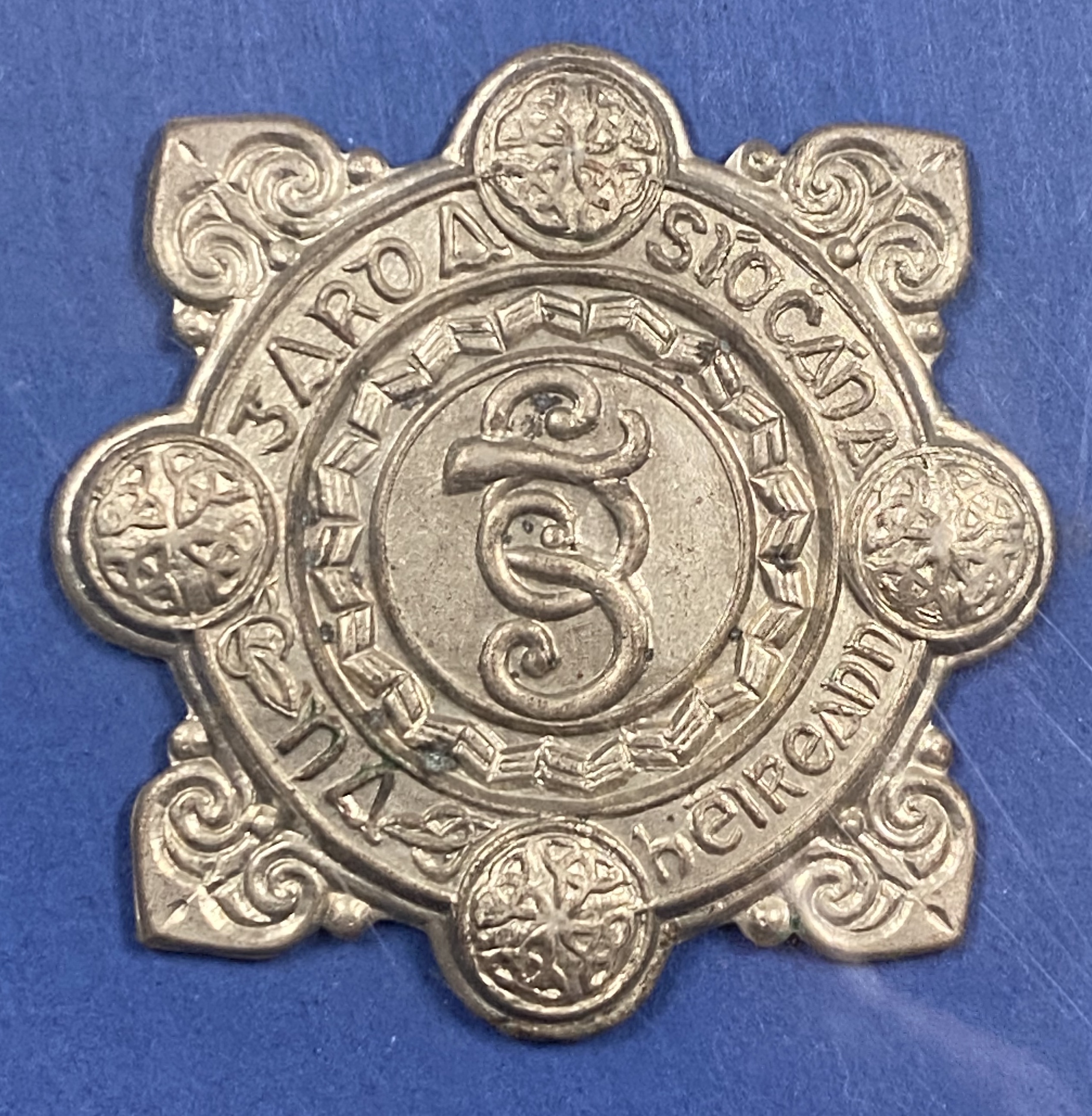
Pre 1990 Cap badge: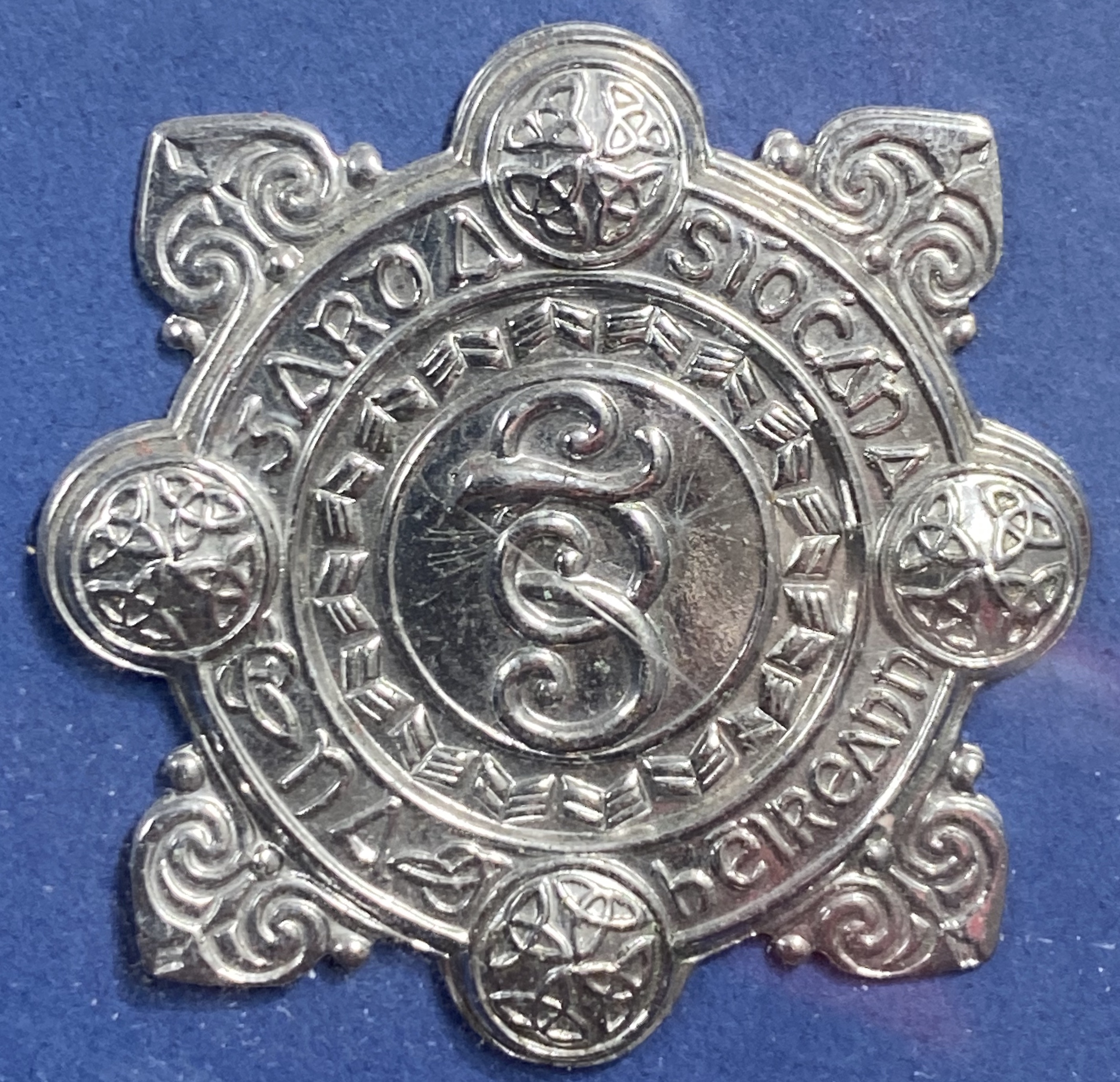
Mid 1990s Cap badge: 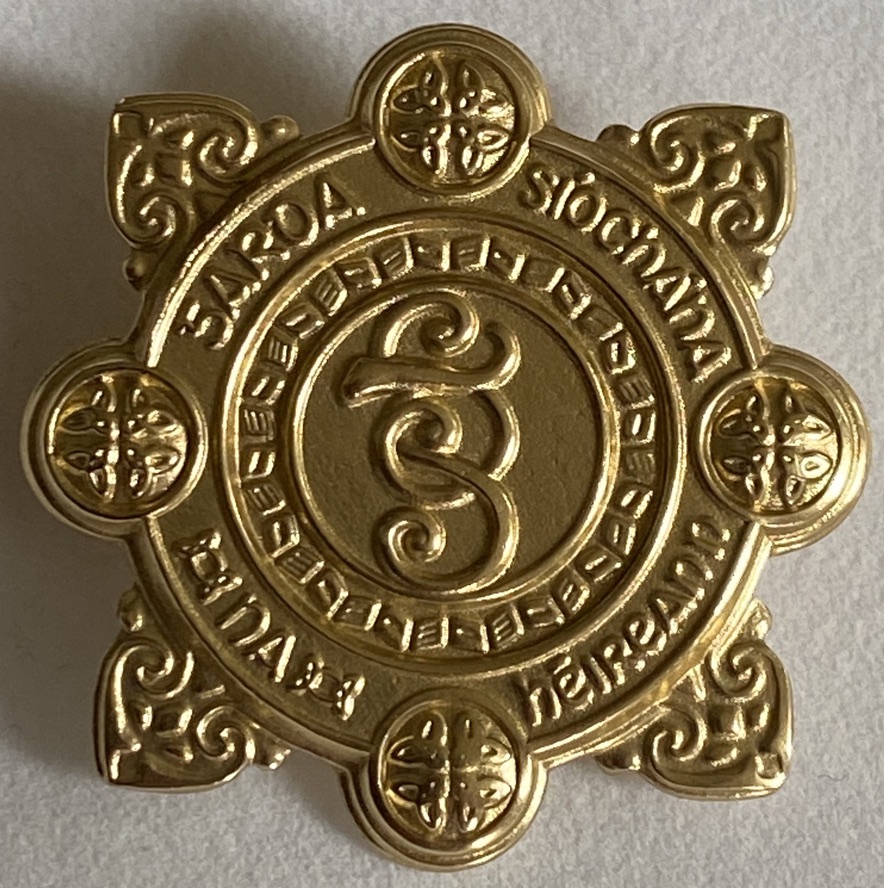
The current cap badge has the central part of the crest enamelled in light blue, with the circle around the Garda name in a darker blue. I don’t have one of those in my collection as yet, but a photo is listed below. The closest I have is the badge below which someone has painted to resemble the current enamelled badge (thanks for the comment pointing that out), albeit on an older version with the 1922 spelling of Siotcana:
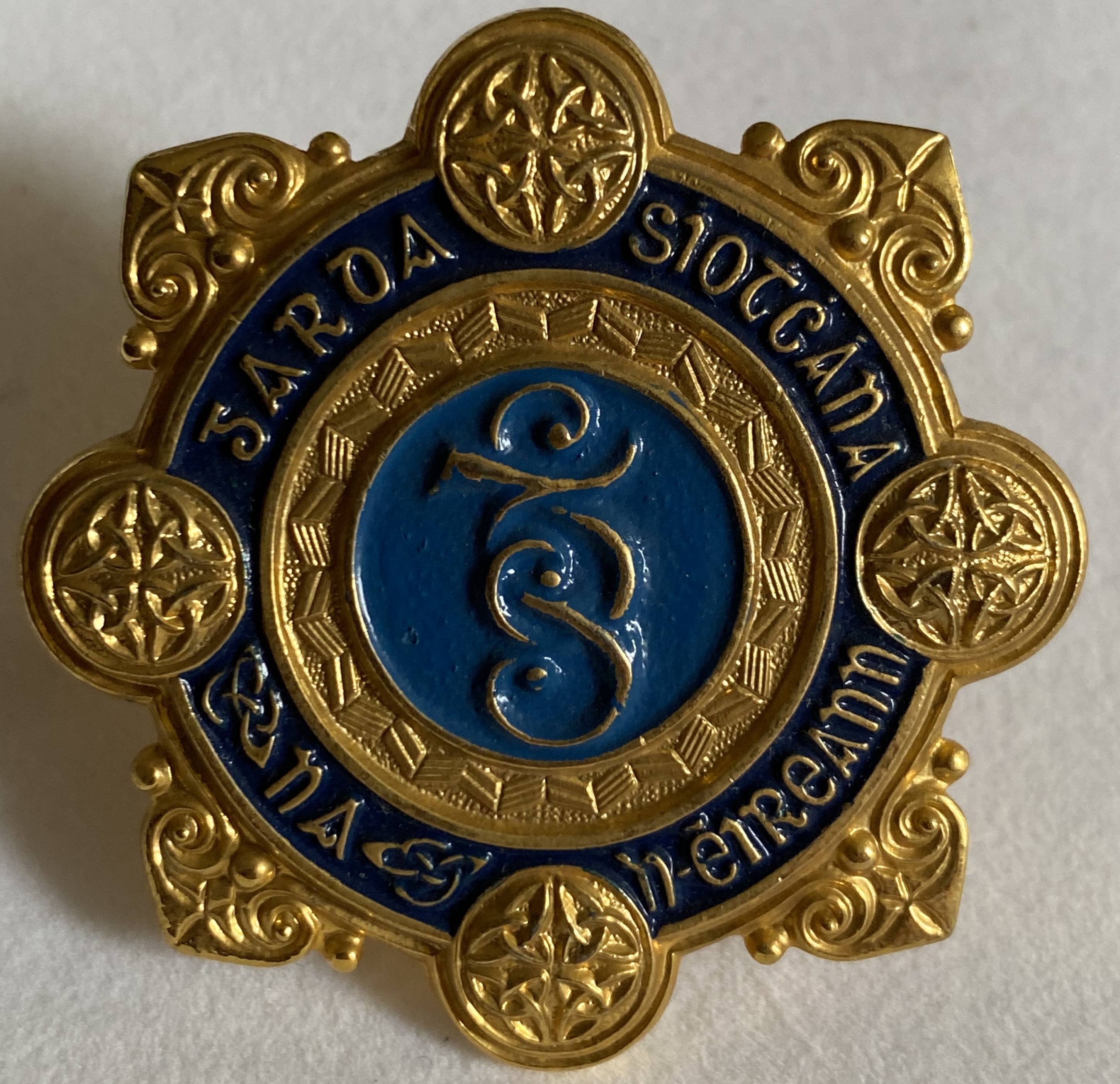
Below, the actual current cap badge:
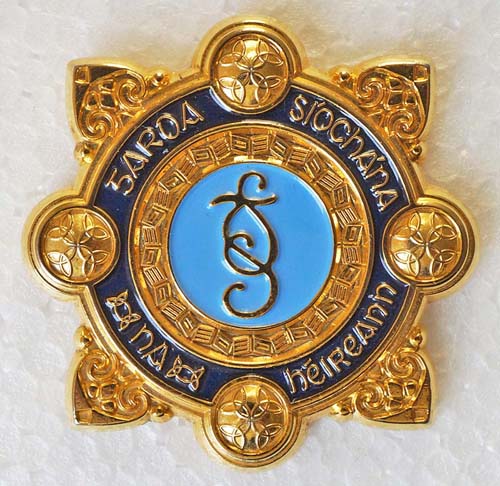
Unlike other forces, I do not have a great deal of paperwork or ephemera from the Garda, but the below attestation certificate in its original delivery tube is a nice addition. Although he is almost certainly dead, I’ve obscured the name of the Garda for privacy reasons.
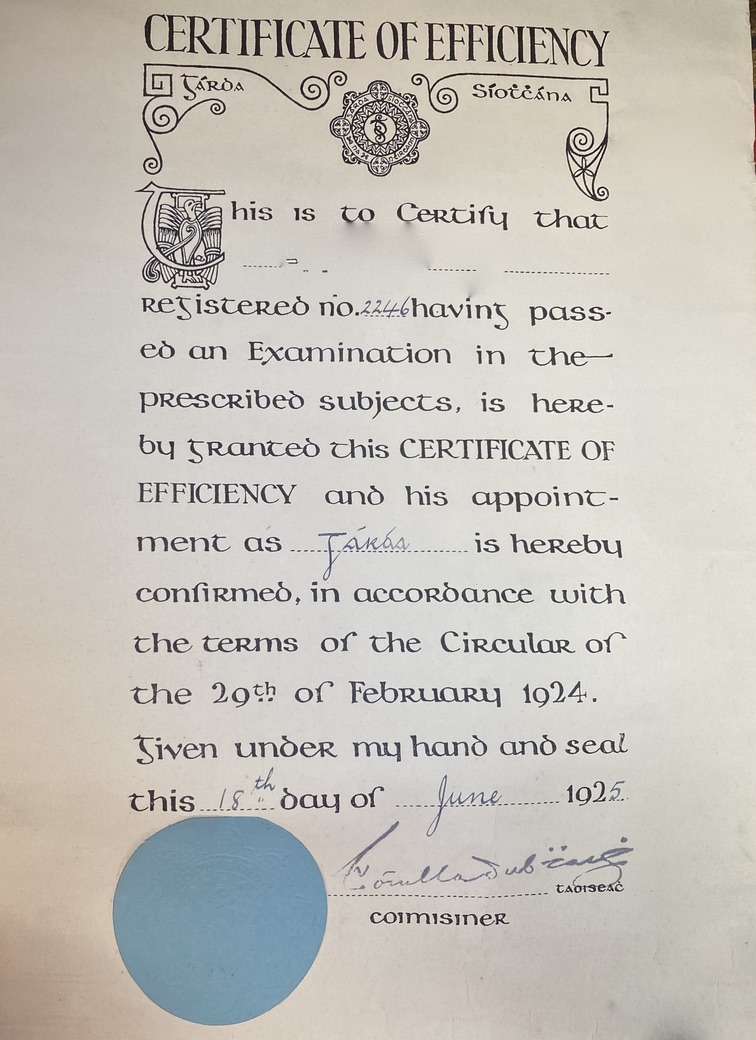

Next, a nice example belt buckle from the 1920s, with old style spelling, manufactured by Firmin, London, as well as a long service medal and 60th Anniversary medallion.
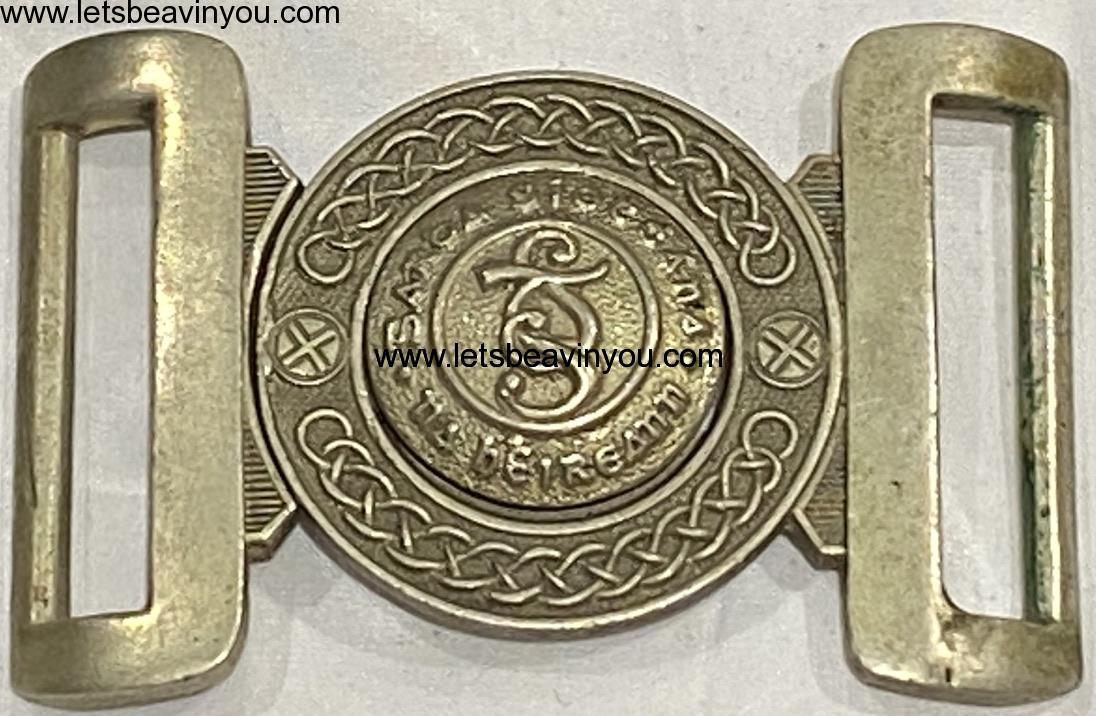
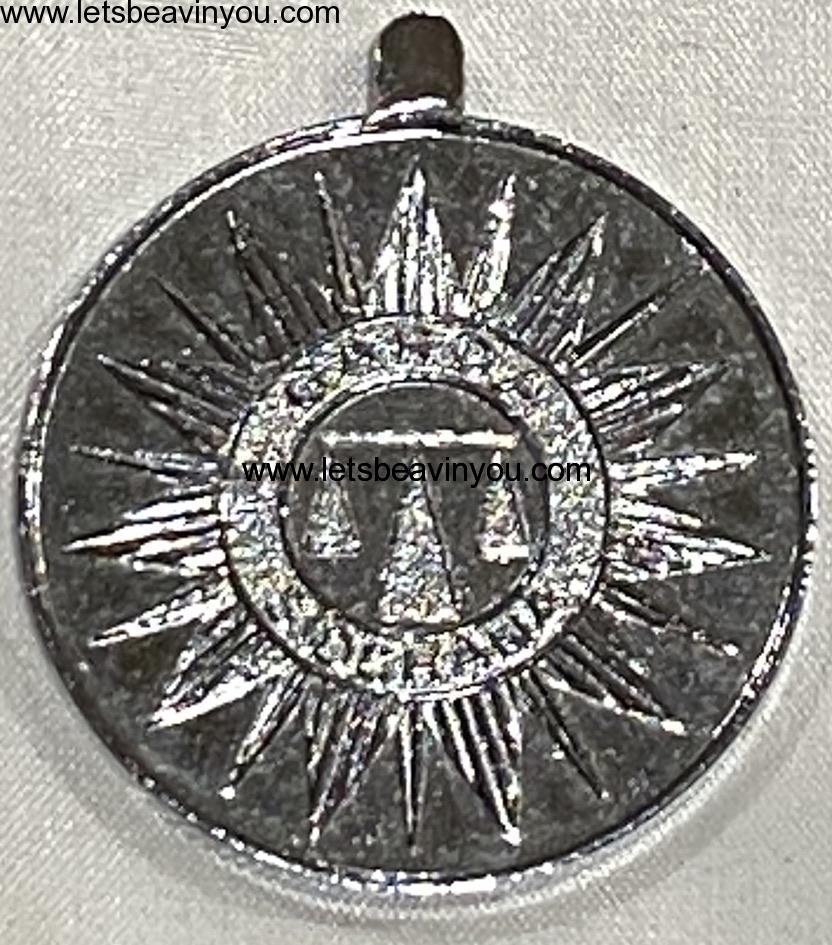
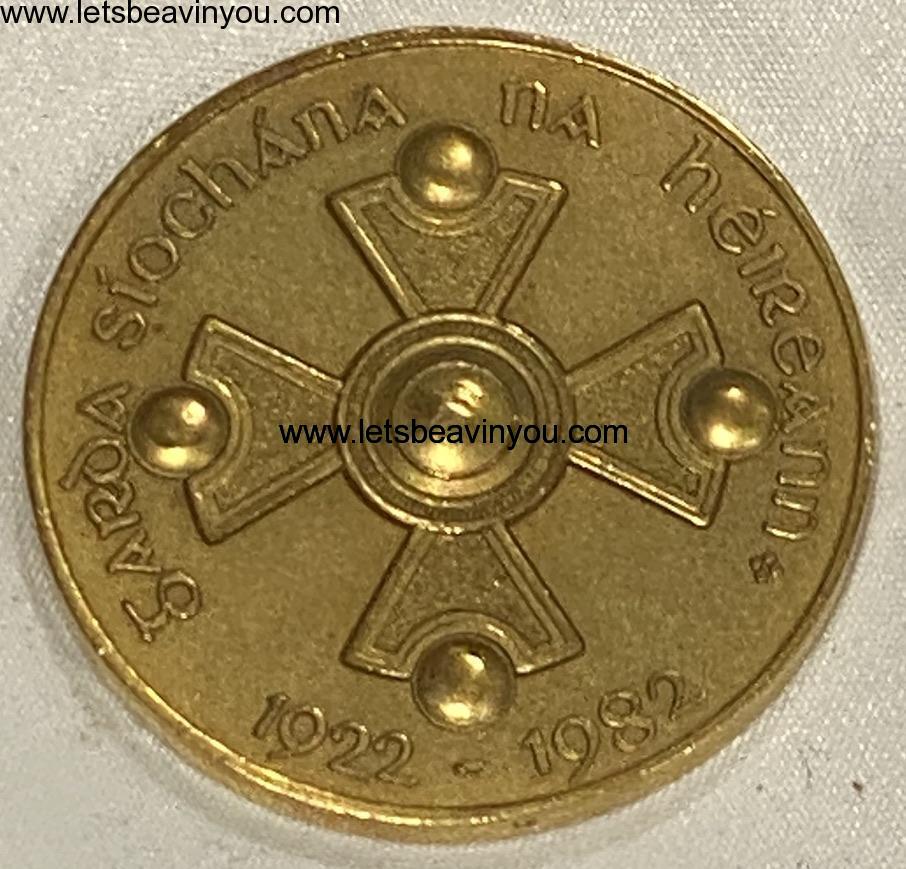 My latest acquisition is a lovely double-sided embroidered banner. Age is difficult to guess as there is no makers label or other identification, albeit the spelling ‘Siotcana’ puts it to the 1920s. Hard to say what it was for. It’s definitely not a flag in the conventional sense as it was designed to be hung; perhaps an Altar frontal or banner in a hall? It’s too ornate and well made to be standard issue. Perhaps one of you out there can enlighten me?
My latest acquisition is a lovely double-sided embroidered banner. Age is difficult to guess as there is no makers label or other identification, albeit the spelling ‘Siotcana’ puts it to the 1920s. Hard to say what it was for. It’s definitely not a flag in the conventional sense as it was designed to be hung; perhaps an Altar frontal or banner in a hall? It’s too ornate and well made to be standard issue. Perhaps one of you out there can enlighten me?
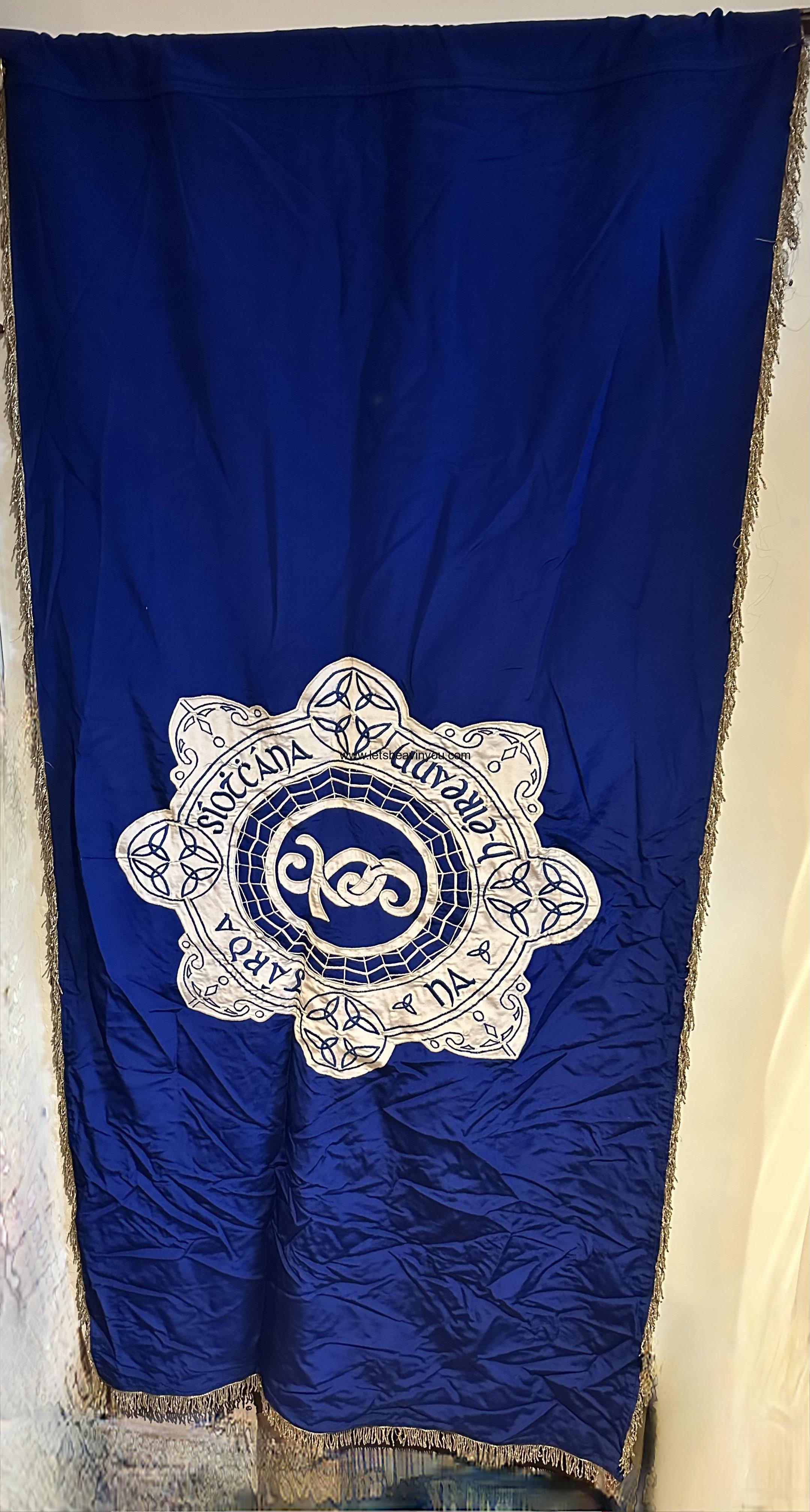 Apologies for the shimmer at the bottom, just blocking out the surround.
Apologies for the shimmer at the bottom, just blocking out the surround.
Uniform
I have two examples of Garda uniform. The first is from the 1960s and the jacket still bears the label of John Ireland & Son, makers and suppliers of police uniform in Ireland since the nineteenth century. The breeches are unusual compared to the more usual trouser. I was told by a former senior Garda that these were issued in country districts for officers to travel by bicycle, which would fit a uniform from the 1920s/30s. Given that this uniform is from the 1960s, I’m told that it is for a qaulified Garda motorcyclist. Ordinarily a Garda was issued with 1 tunic and 2 pairs of slacks per year. A Garda motorcyclist, however, was issued with 1 tunic, 1 pair of slacks and 1 pair of breeches. Motorcyclists were also issued with a special Motorcycle Great Coat; it was shorter with a short opening on each side, a Cloth Belt, with the baton pocket inside the left breast and notebook pocket inside right. The lining of the sleeves were elasticated at the cuffs.
The second example I had first thought to be slightly newer, but given the button fly on the trouser may well be a similar vintage. There is also a fantastic quality cape.
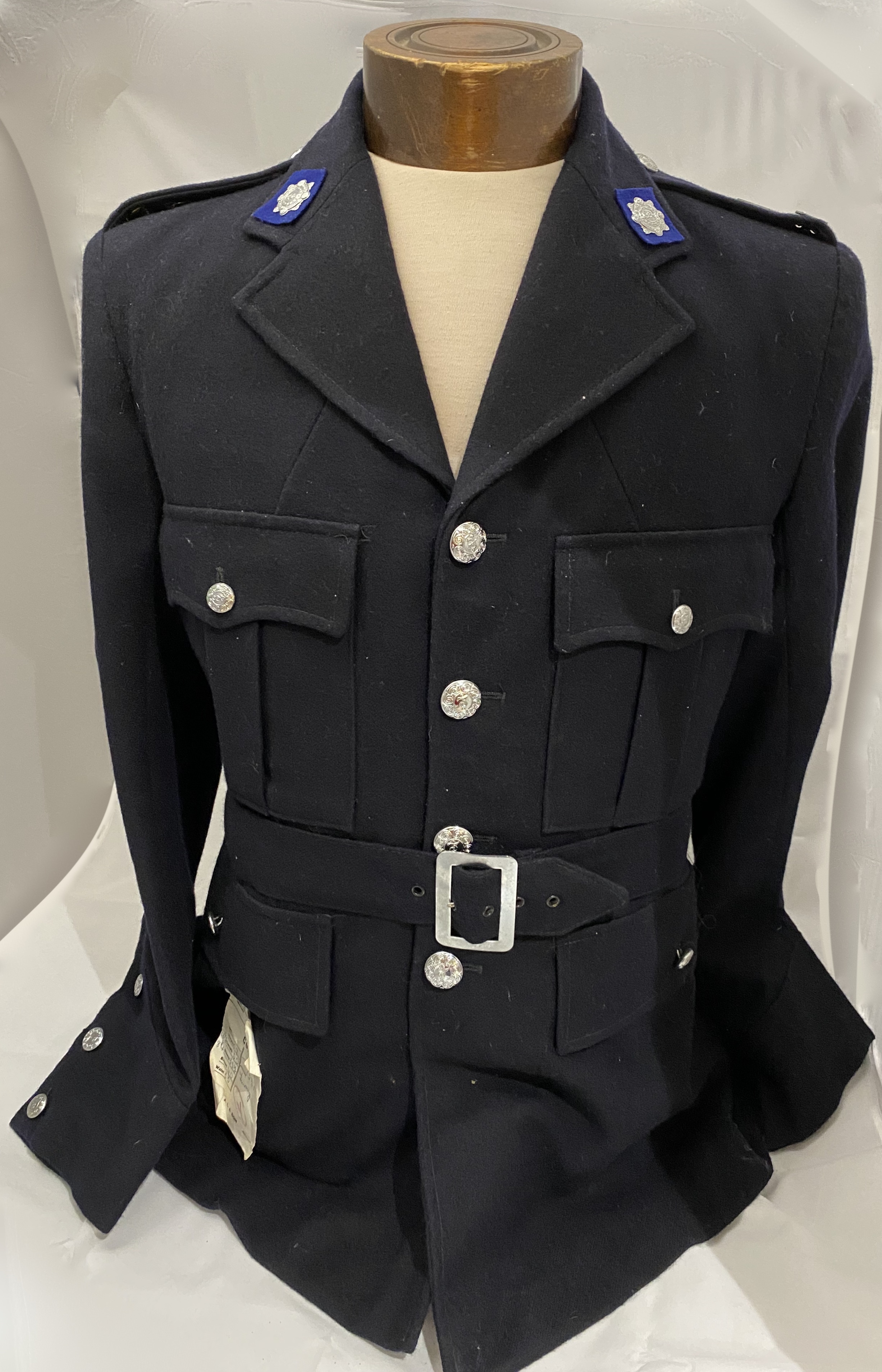
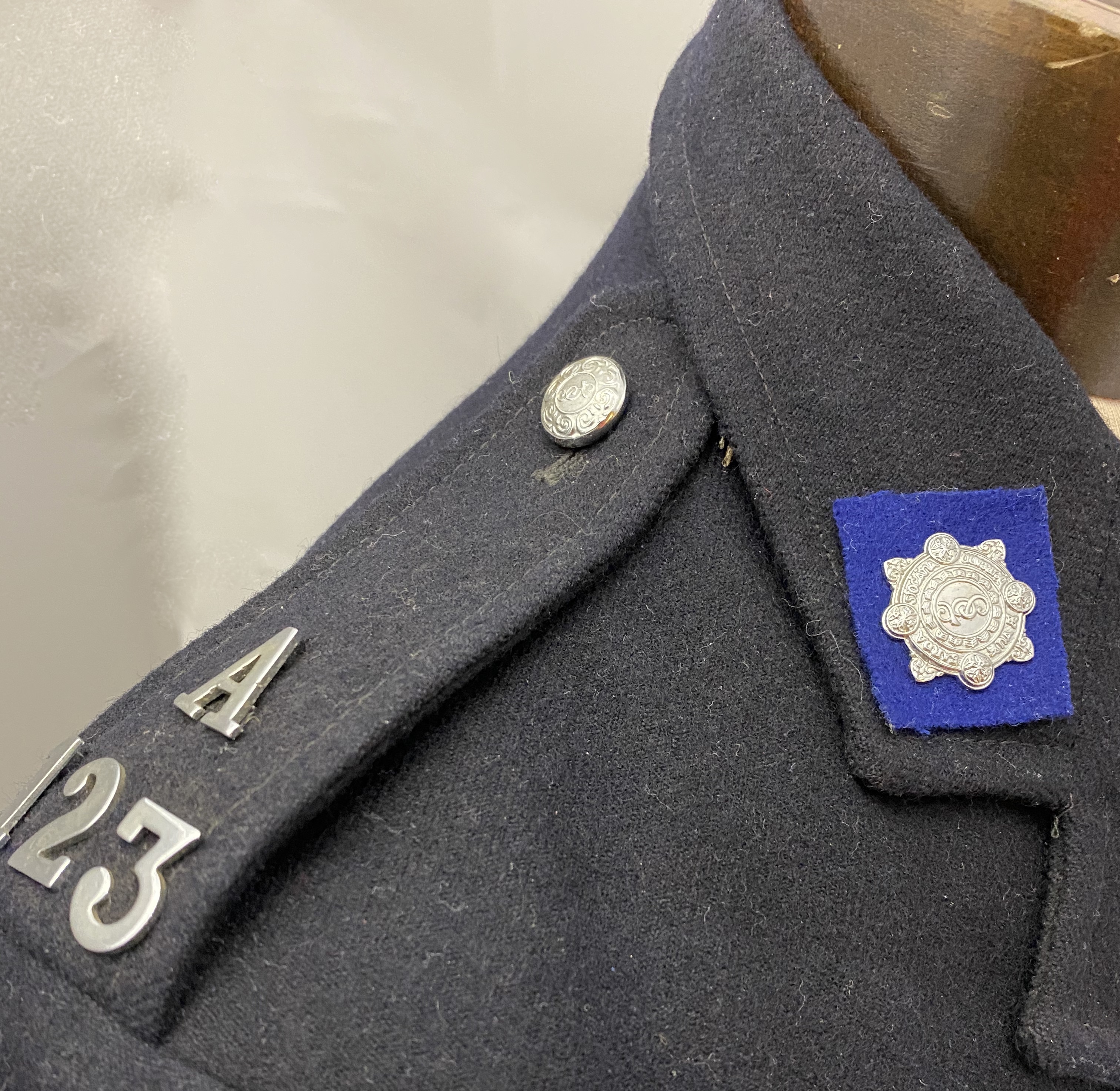
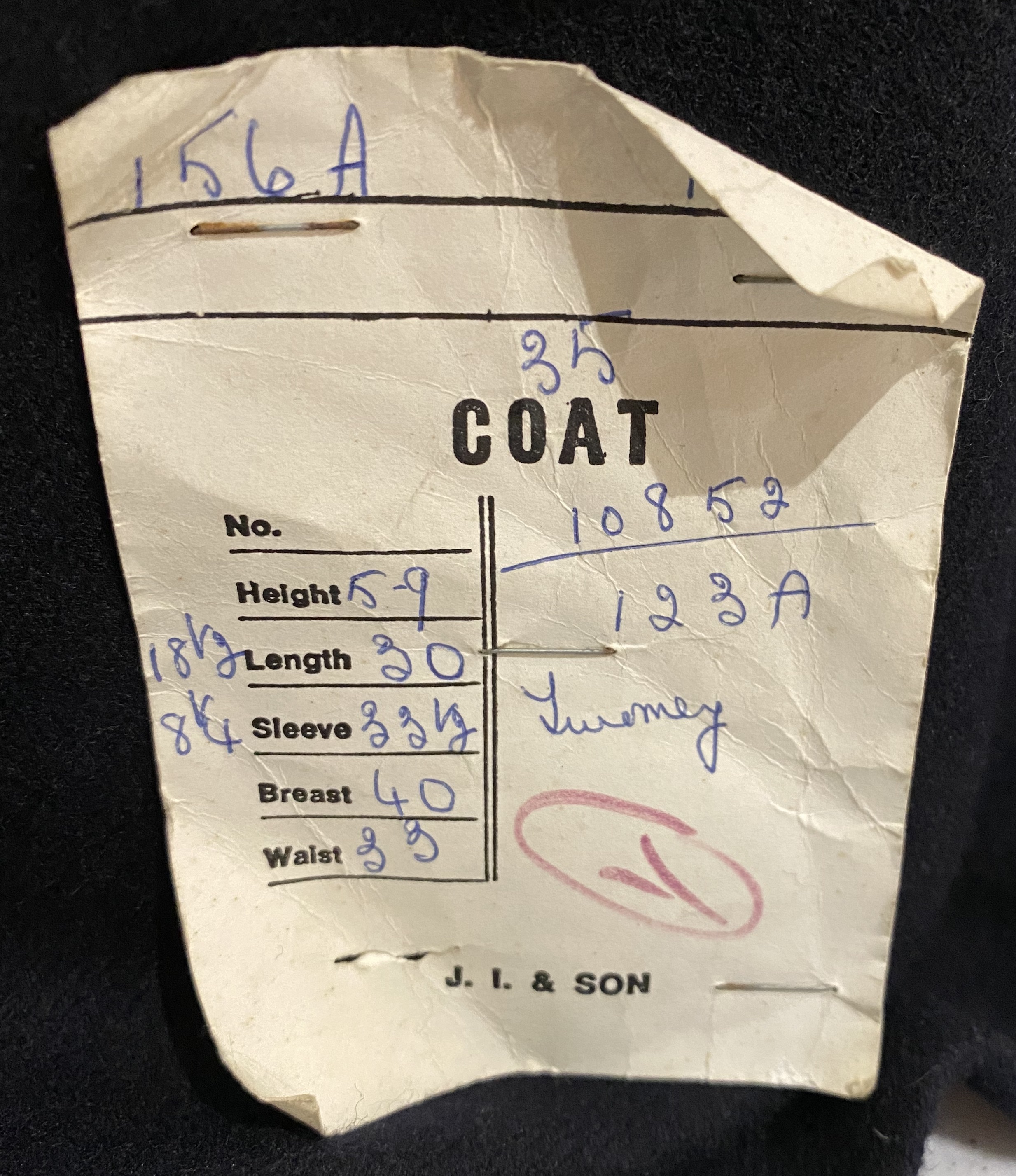
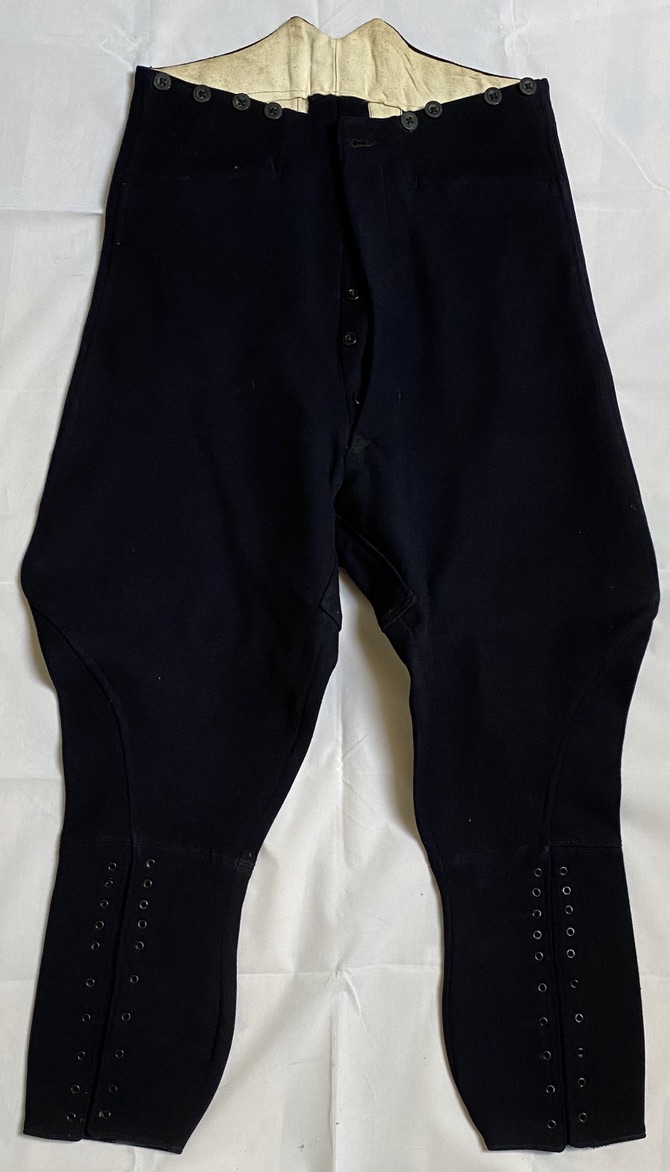
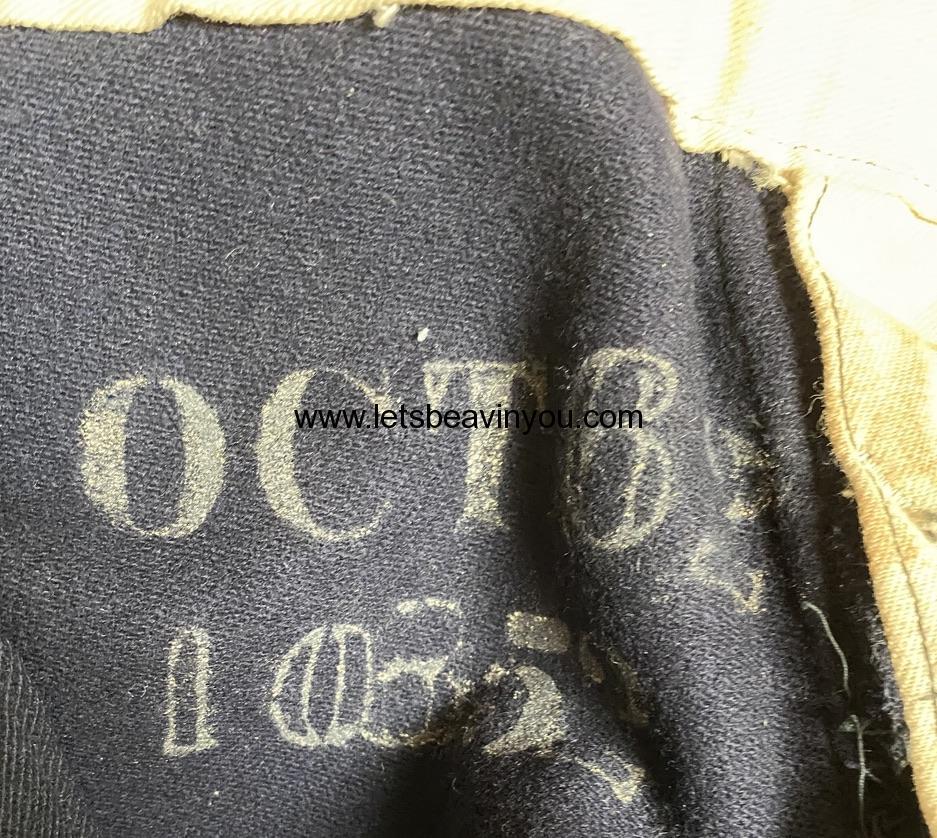
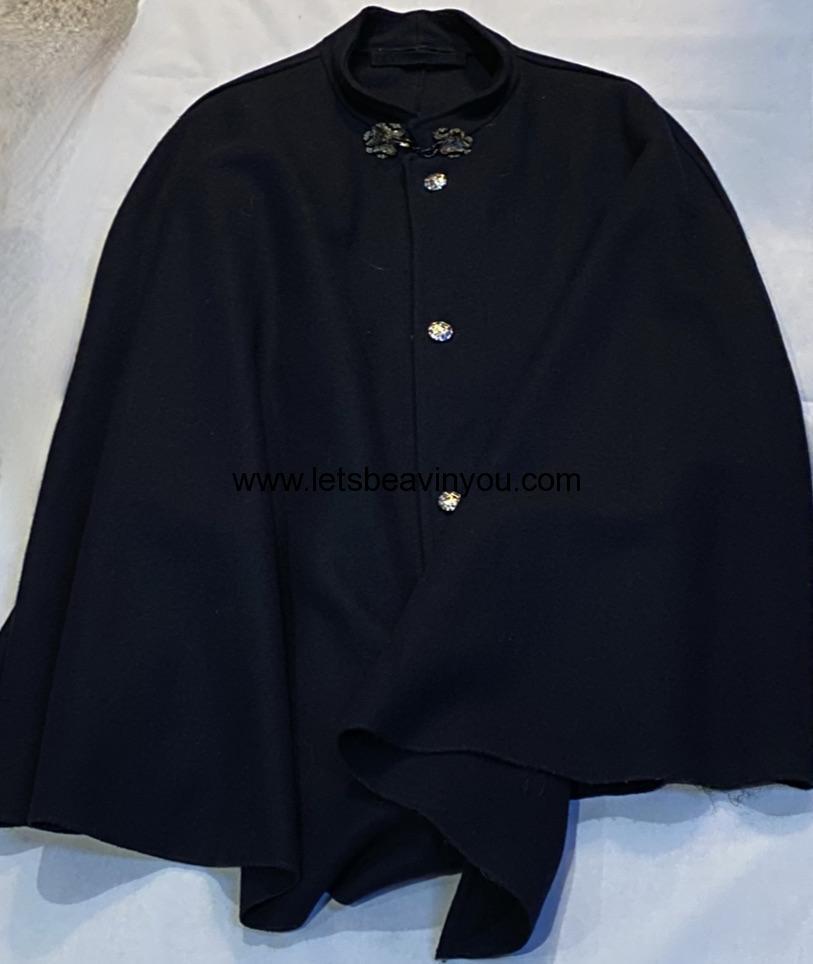
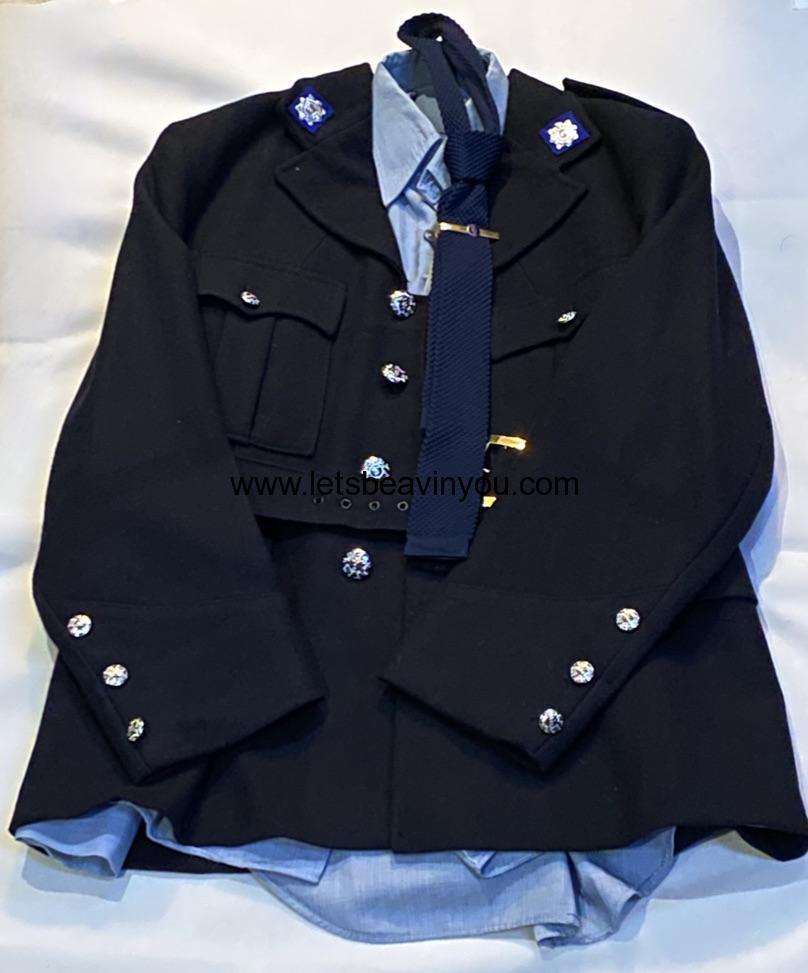

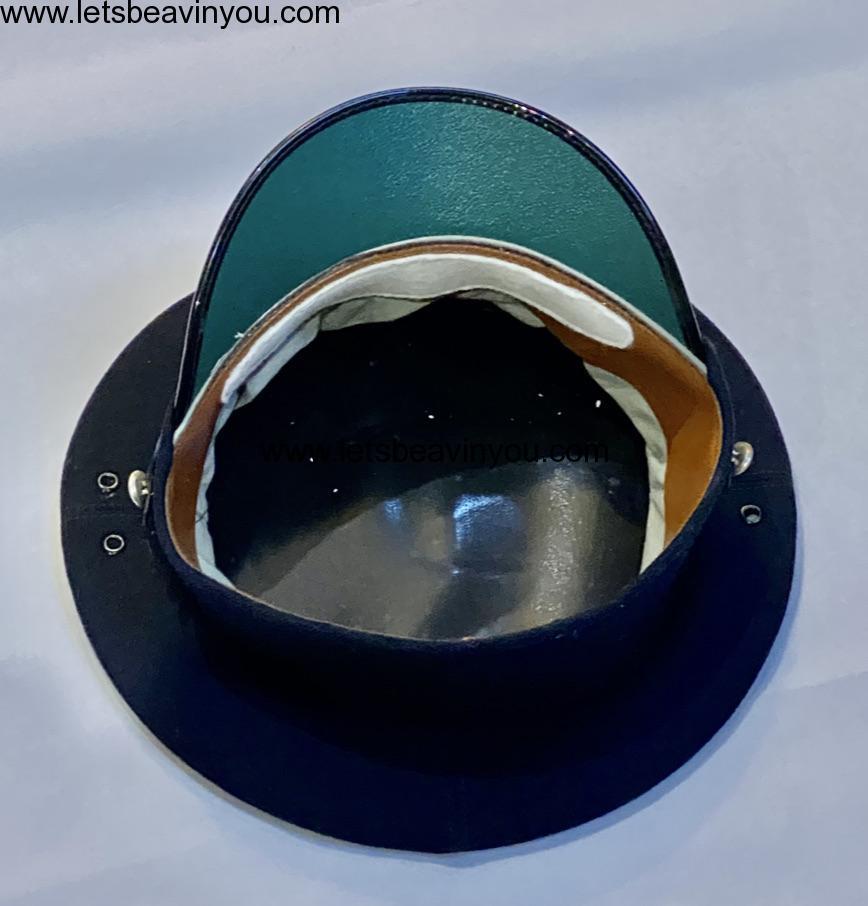
Next is a relatively rare 1923 edition of the Garda Finance Circulars, followed by a Sports Programme, Force Orders and a book on crime investigation:
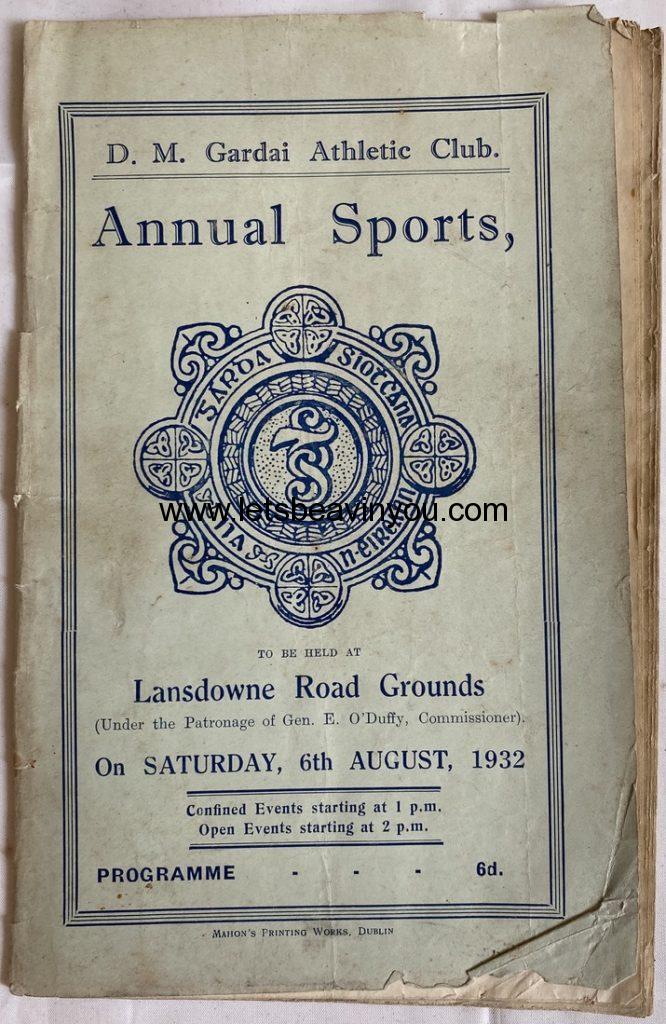
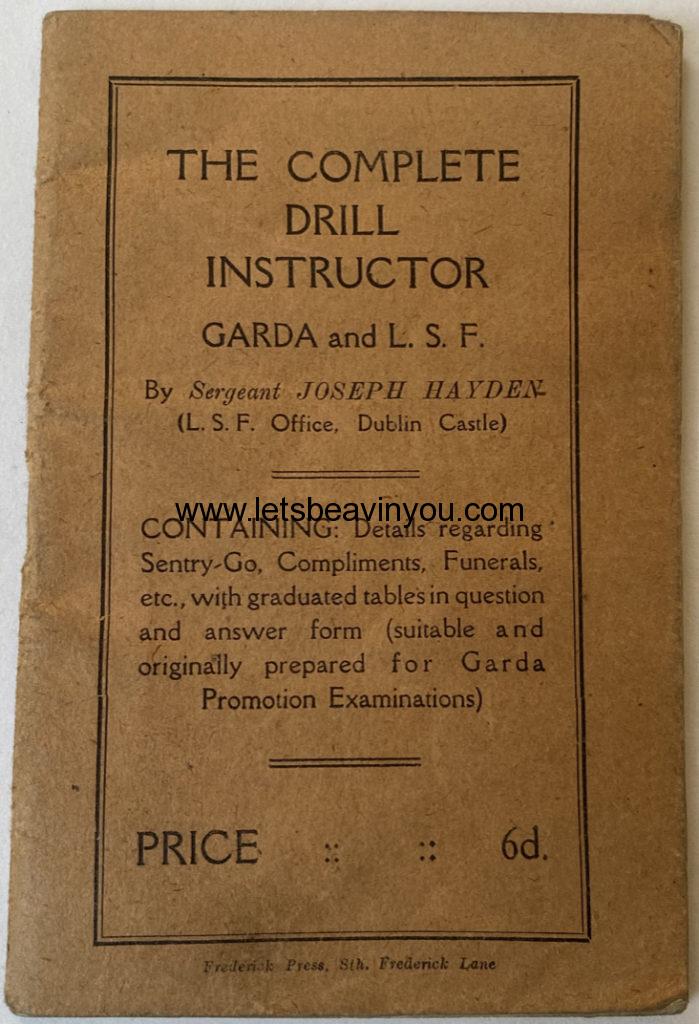
Finally, a selection of older and newer numbers and letters, newest at the end.

